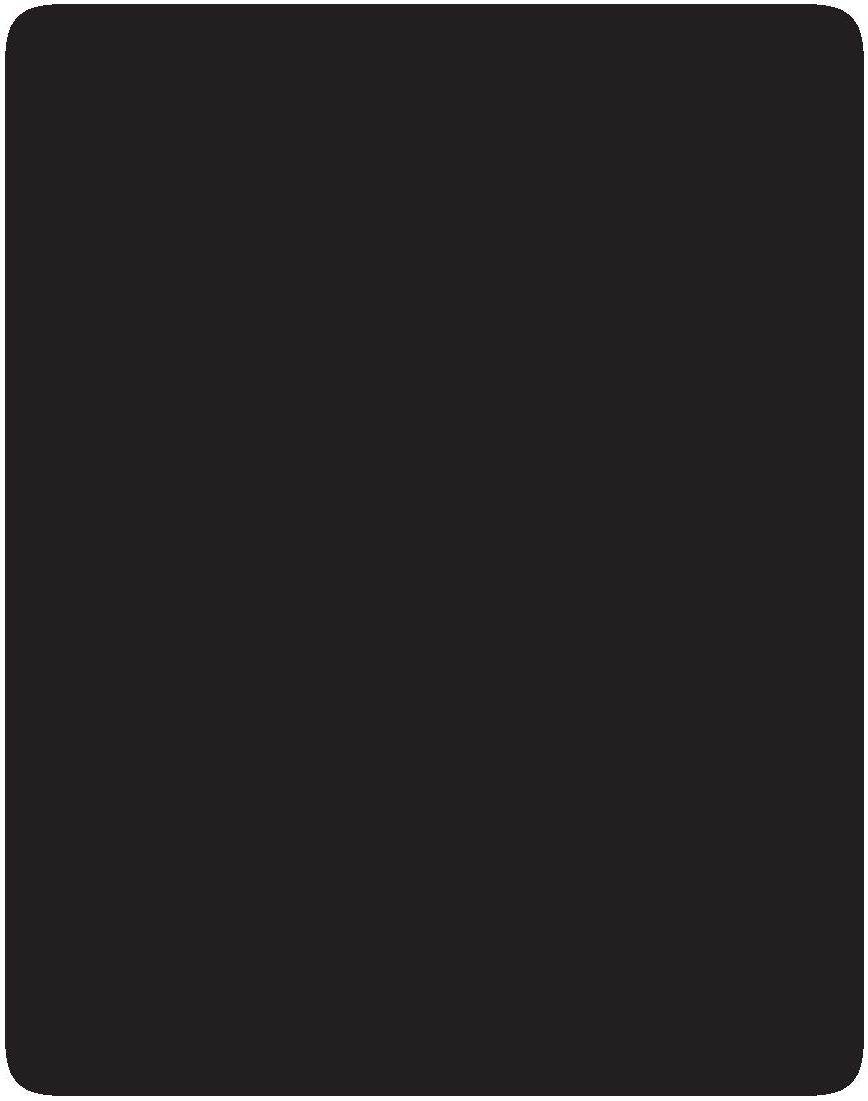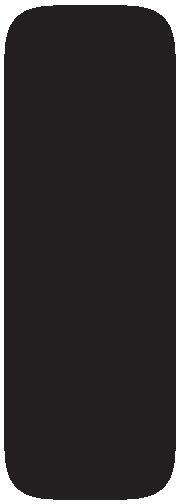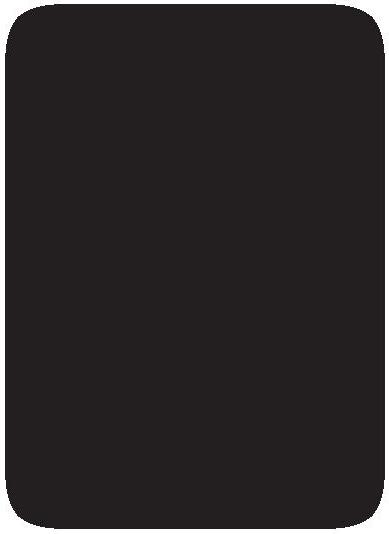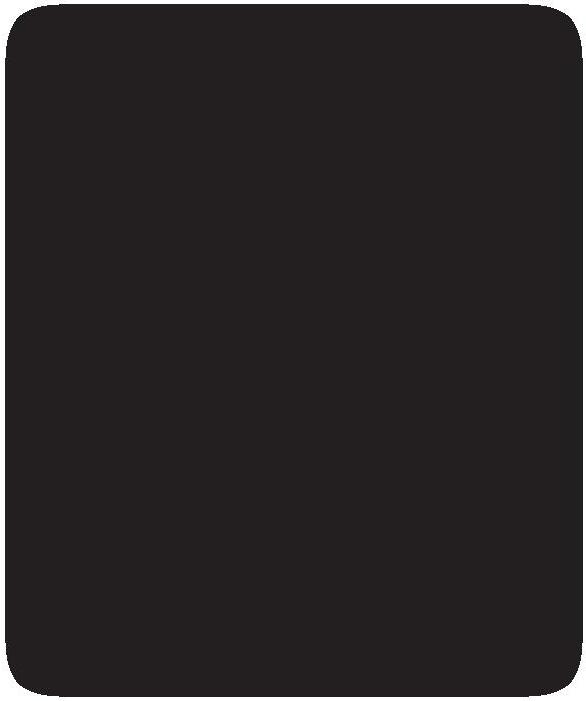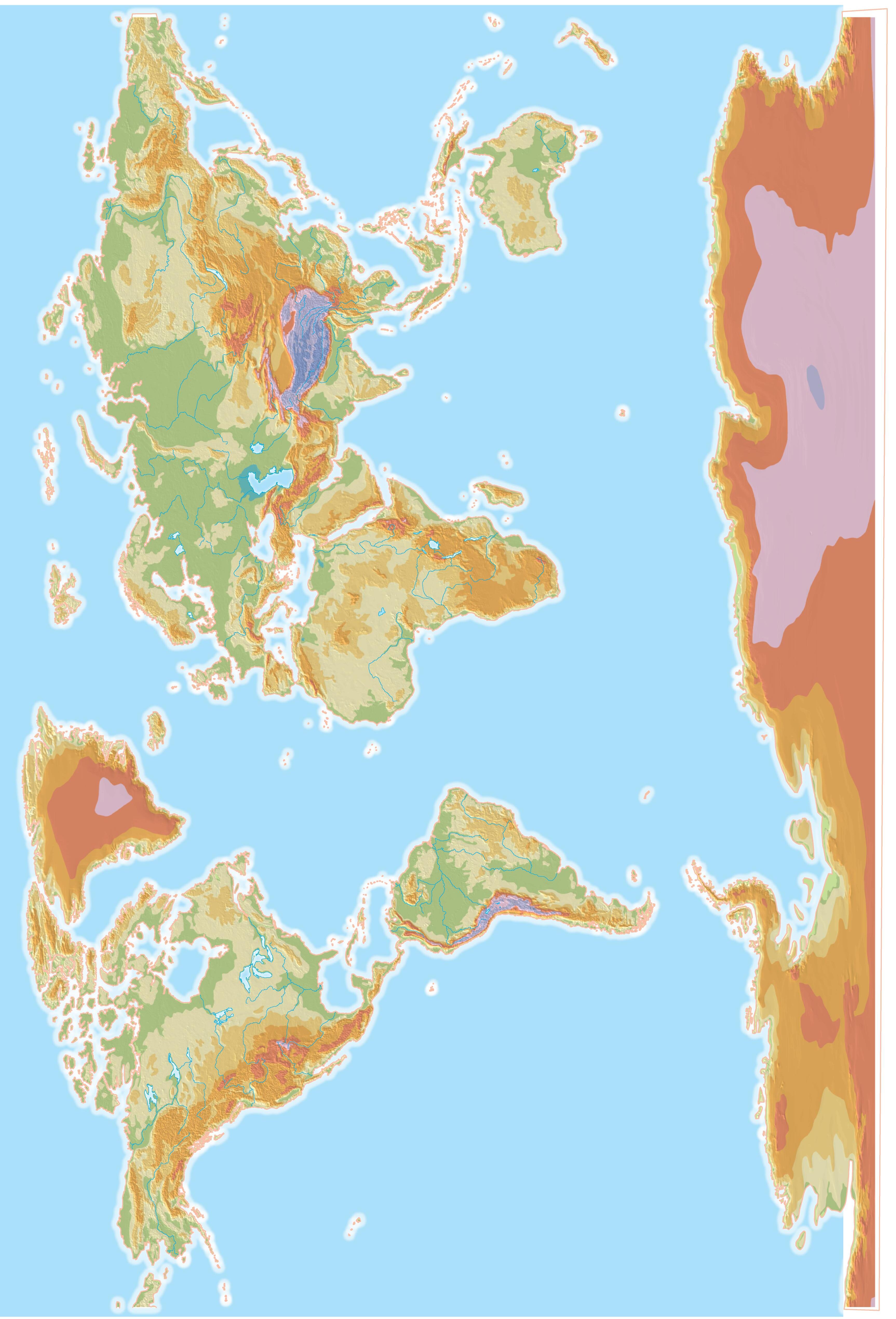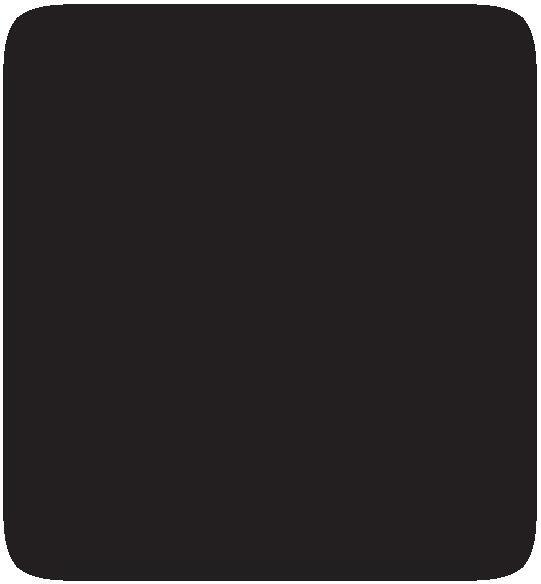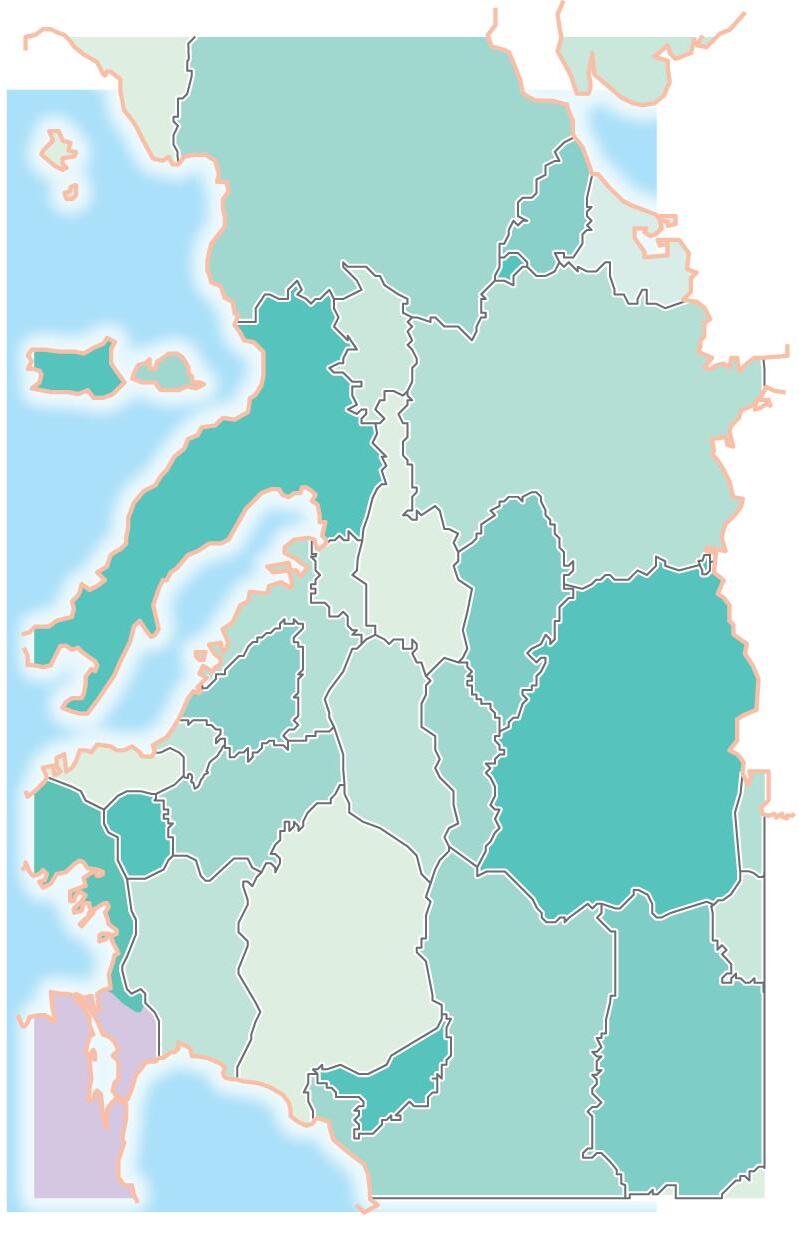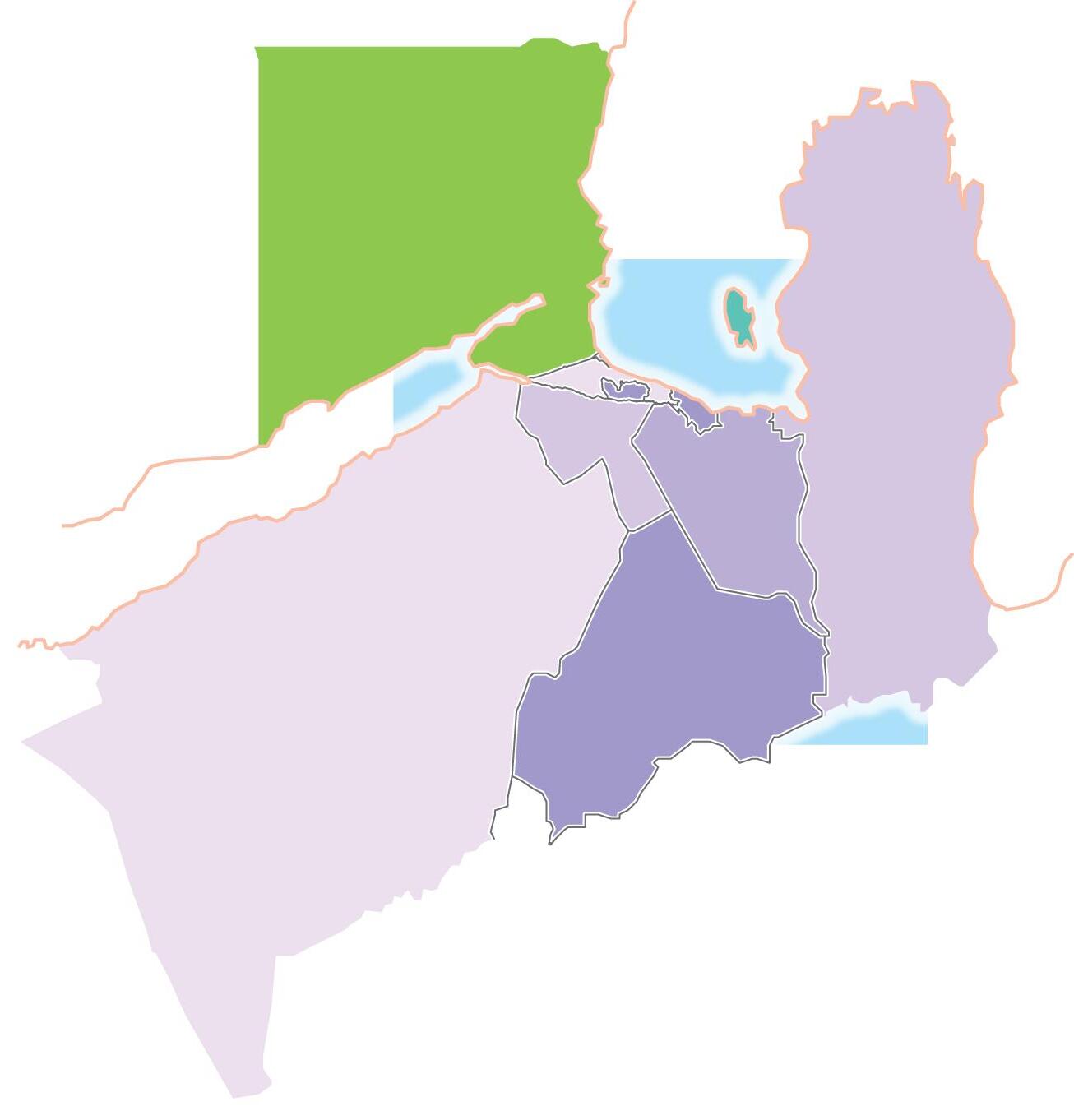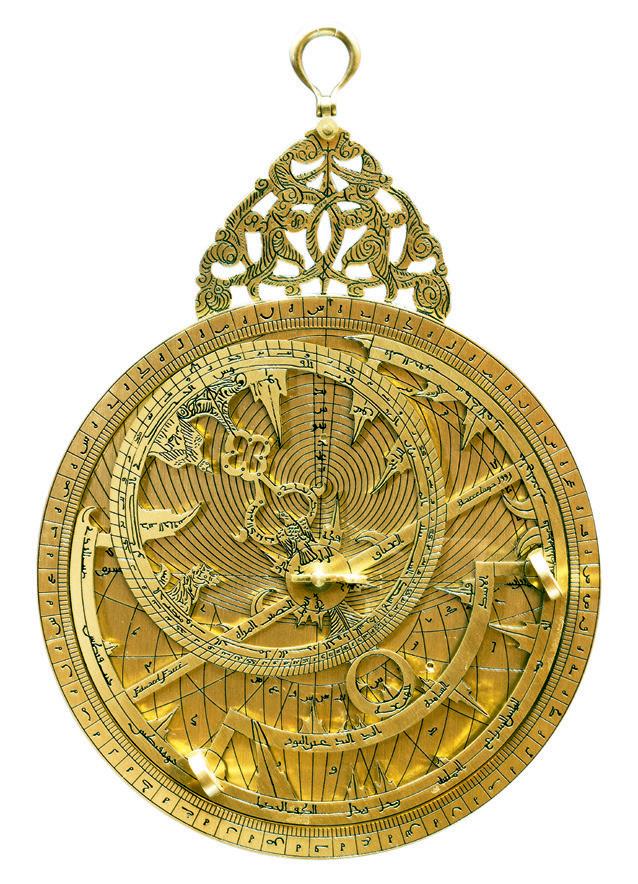
Learn in English
SAMPLE
Proyecto elaborado de acuerdo al currículo de Andalucía (Orden de 30 de mayo de 2023)


Proyecto elaborado de acuerdo al currículo de Andalucía (Orden de 30 de mayo de 2023)

Learn in English
Publishing coordination
LUIS PINO GARCÍA
Editor MARÍA PRIOR VENEGAS
MARINA TEMPRANO BENÍTEZ
Cover design
ALEGRÍA S. GONZÁLEZ
Inside design
ALEGRÍA S. GONZÁLEZ
ULISES PÉREZ
Layout
JORGE TORVISCO
Translator
SCOTT A. SINGER
Illustrations
JOSÉ MARÍA RUEDA DELGADO PALOMA CHILIA ANTEQUERA
Picture editing
REYES GORDO LÓPEZ
Maps
DEPARTAMENTO DE CARTOGRAFÍA DE ANAYA EDUCACIÓN
Photographs
ARCHIVO ANAYA (6X6 PRODUCCIÓN FOTOGRÁFICA; CANDEL, C.; COSANO, P.; HERNÁNDEZ MOYA, B.; LEIVA, Á.; LEZAMA, D.; LUCAS, J.; MARTIN, J.; MARTÍN, J.A.; REDONDO, M.; RIVERA JOVE, V.; RUIZ PASTOR, L.; STEEL, M.; SÁNCHEZ, J.; VALLS, R.), ACI (BRIDGEMAN; CPA MEDIA PTE LTD/ALAMY; FABELDIER LOOMAN/ALAMY; GB LANMAS/ ALAMY; INCAMERASTOCK/ALAMY; LUCIANO QUEIROZ/ALAMY; M RAMÍREZ/ALAMY; NORTH WIND PICTURE ARCHIVES/ALAMY; ROCKLIGHTS/STOCKIMO/ALAMY; ROGER CRACKNELL 01_CLASSIC/ALAMY; SCIENCE HISTORY IMAGES/ALAMY; TEO MORENO MORENO/ALAMY; THE PICTURE ART COLLECTION/ALAMY; TRAVELSCAPE IMAGES/ ALAMY; WORLD HISTORY ARCHIVE/ALAMY), ALAMY / CORDON PRESS (AGTRAVEL; CPA MEDIA PTE LTD; DMITRIY MOROZ; FUNKYFOOD LONDON - PAUL WILLIAMS; WHPICS), ALBUM ARCHIVO FOTOGRÁFICO (AKG-IMAGES/NIMATALLAH; ANTONIO MUÑOZ/EFE; APACHES ENTERTAINMENT; DE AGOSTINI/G. DAGLI ORTI; ERICH LESSING; JULIO MUÑOZ/EFE; PEPE TORRES/EFE; PRISMA; SCIENCE SOURCE; SFGP; WARNER BROS.), CORDON PRESS (UNIVERSAL/COURTESY EVERETT COLLECTION), GETTY IMAGES (DEA PICTURE LIBRARY; HERITAGE IMAGES; IAN FORSYTH; ISMAEL ADNAN YAQOOB/ANADOLU AGENCY; SCOTT PETERSON; SEPIA TIMES; UNIVERSAL IMAGES GROUP), JOSÉ ÁNGEL GRAU FERNÁNDEZ, PHOTOAISA (P. ROTGER), THE METROPOLITAN MUSEUM OF ART (ROGERS FUND, 1929), 123 RF AND CONTRIBUTORS.
@ ALGAIDA EDITORES, S. A. 2024. Avda. San Francisco Javier, 22. Edif. Hermes, 5.ª, 3-8. 41018 Sevilla.
ISBN
BILINGUAL EDITION: 978-84-9189-801-6
LEARN IN ENGLISH: 978-84-9189-800-9
All rights reserved. The contents of this publication are protected by law, which establishes prison sentences and / or fines, as well as the corresponding compensation for damages, for those who copy, plagiarise, distribute or publicly disseminate in part or in whole, a literary, artistic or scientific publication, or who transform, perform or produce it artistically in any format or through any channel, without prior permission. This publication may only be copied, distributed, publicly disseminated or transformed with the permission of the authors, save where otherwise provided by law. If you need to photocopy or scan any part of this publication, please contact CEDRO (Centro Español de Derechos Reprográficos, www.cedro.org).
This work may contain links to external sources and websites (hyperlinks) that Algaida does not edit, monitor, oversee and/or maintain, and over which the company has no control whatsoever; thus, Algaida expressly declines any liability pertaining to such sources and websites.
The following have collaborated in preparing this work
MIGUEL ÁNGEL FERNÁNDEZ GARCÍA
EMMA SAMPER LÓPEZ
JUAN FRANCISCO CASADO AVILÉS
JULIA HERNÁNDEZ SALMERÓN
VALERIANO SÁNCHEZ RAMOS
LORENZO GÓMEZ VALERO
DIEGO BONILLA CODESEDA
ASUNCIÓN MÉNDEZ CARRILLO
M.ª INMACULADA GAVIRA VALLEJO
M.ª ARÁNZAZU MARTIALAY MARTÍNEZ
Adapted by MARINA ROBLES MORICHE
All of the activities in this book that require writing should be completed in the student's notebook.
This project is in line with the UN and Agenda 2030 Sustainable Development Objectives (SDO).
Many activities and tasks have been designed to promote cooperative teamwork.
Other tasks in this textbook provide learning opportunities based on problem-solving.
Our educacional materials are edited with a commitment to fostering and promoting equality among all and respect for diversity.
The contents of this book and the working procedures have been selected and prepared taking into account criteria of care, protection and conservation of the environment.
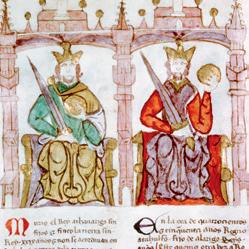

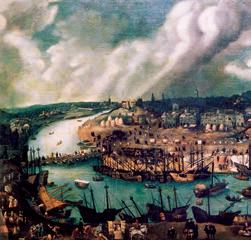
4 The Iberian Peninsula in the Middle Ages
1. Al-Andalus
2. Society and economy in Al-Andalus Activities
3. Culture and art in Al-Andalus
4. The Christian Kingdoms across the Iberian Peninsula Activities
5. Resettlement
6. Political institutions of the Peninsular Christian Kingdoms Activities
7. Society and economy in the Christian Kingdoms
8. Culture and art in the Christian Kingdoms Activities
Grammar in G&H: adjectives, comparative and superlative 10 questions
Final task: Let’s talk about Andalusian immaterial heritage
5 Modern Age. Humanism and the Renaissance
1. Start of the early modern period
2. The Renaissance ideas Activities
3. Humanism
4. Economic and social transformations
5. The international relationships during the 16 th century Activities
6. The religious conflict
7. Renaissance art Activities
Grammar in G&H: narrative linkers 10 questions
Final task: The first globalisation
6 The modern state
1. The modern state
2. The reign of the Catholic Monarchs Activities
3. Geographical discoveries: Castile and Portugal
4. The Hispanic monarchy and the construction of an empire Activities
5. Economy and society at the begining of the Modern Age
6. Conquest and colonisation of the Americas Activities
Grammar in G&H: future tense 10 questions
Final task: A globalisation trade map

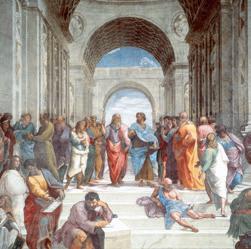
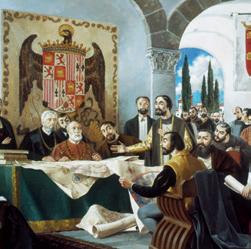
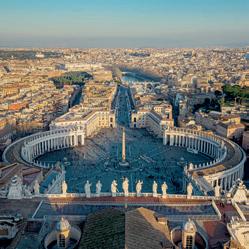

7.
9
1.
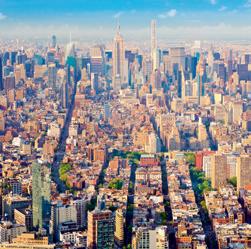
The themes are located on the left pages. In the central column all content is adapted to the linguistic level. In the margins there are diagrams, maps, photographs, graphics and illustrations. The most important words are highlighted in bold.

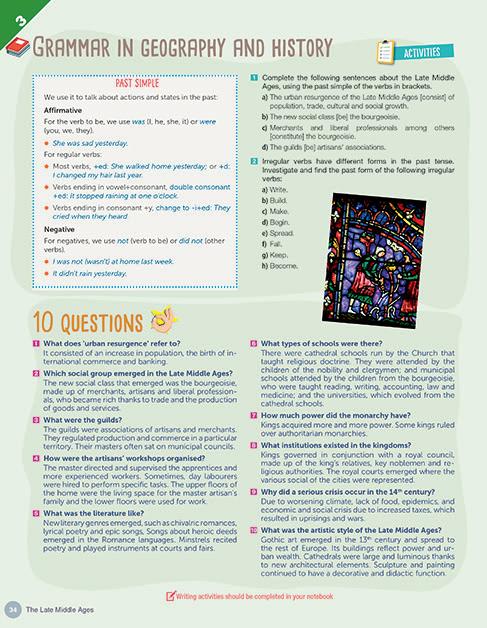
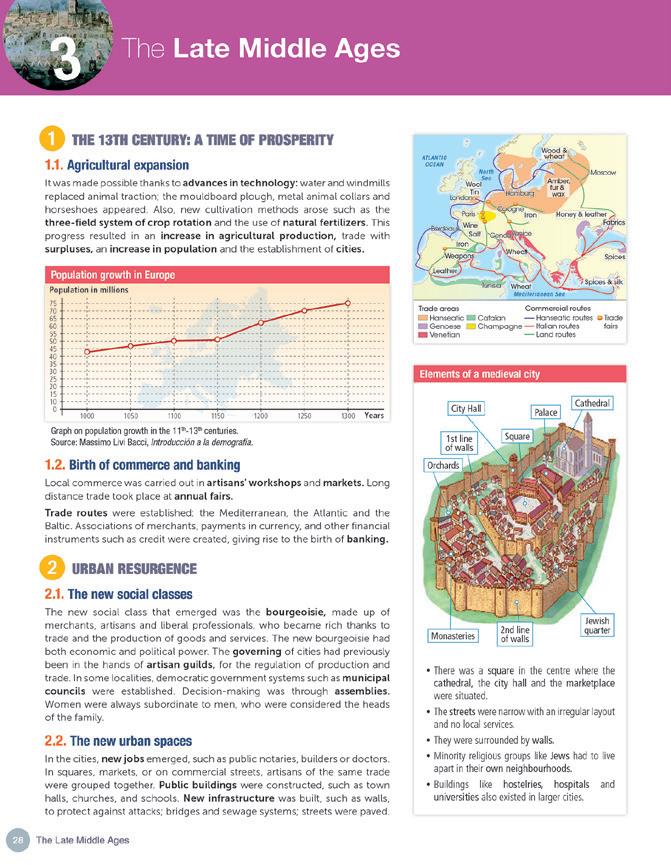
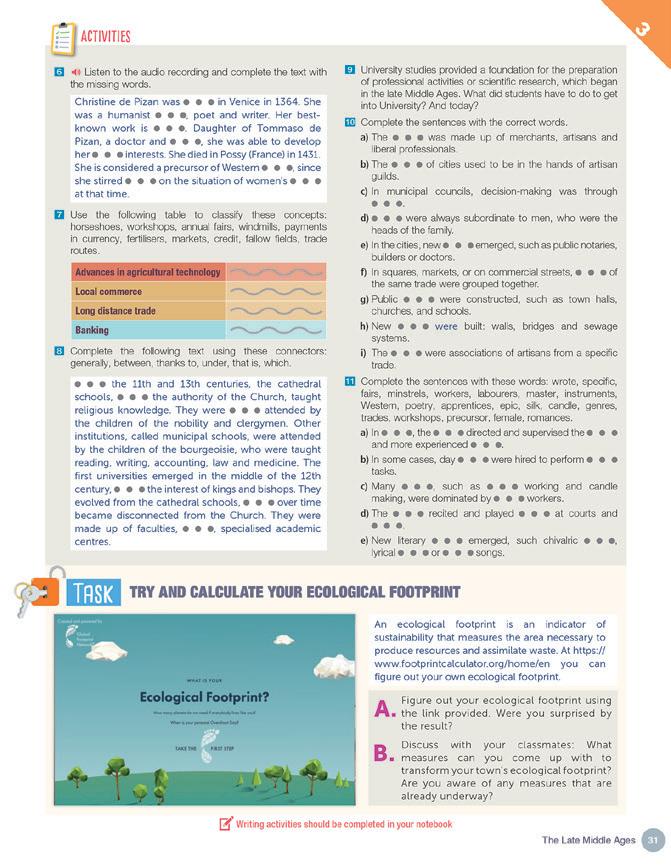
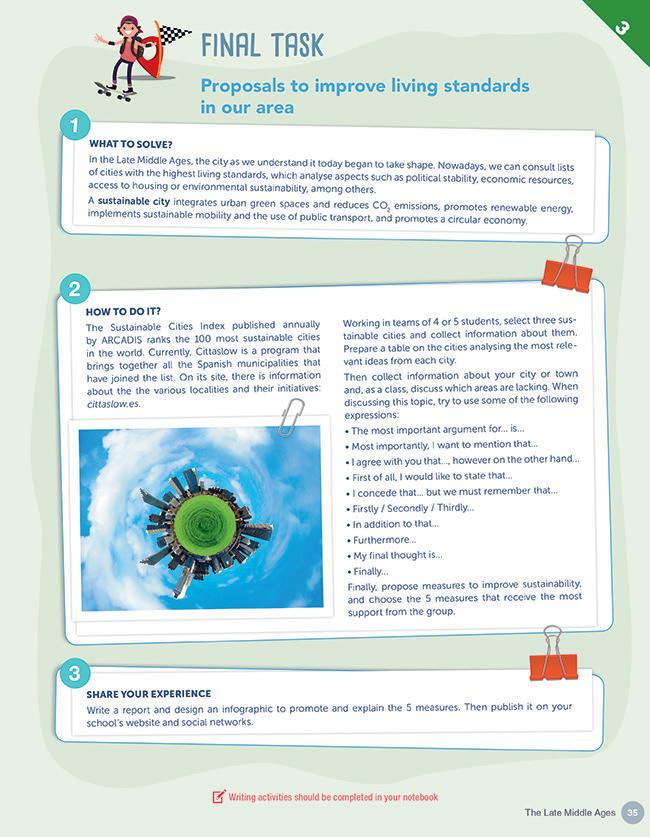
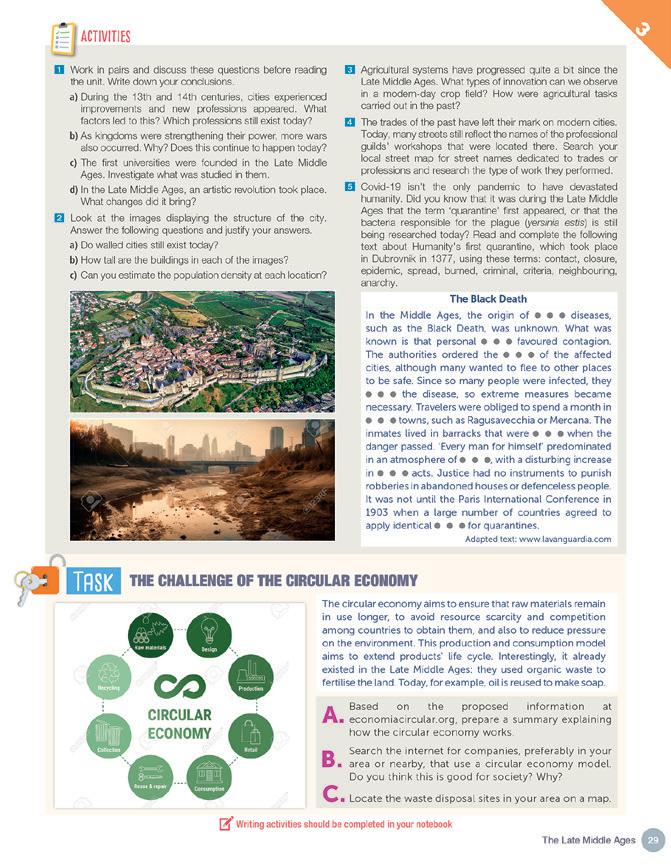
On the right pages you will find all the activities related to the themes located on the left page. The proposed activities follow the CLIL (AICLE) methodology. The five skills are worked on: reading, listening, speaking, writing and conversation. In addition, you will find different tasks, a proposal of different learning situations.
Each unit ends with three sections:
• Grammar in Geography and History: you will find a grammar rule with a proposal of activities to apply grammar to specific contents.
• 10 Questions: summary of the main ideas organised in questions and answers.
• Final task: a group of activities to apply and consolidate what you have learned.
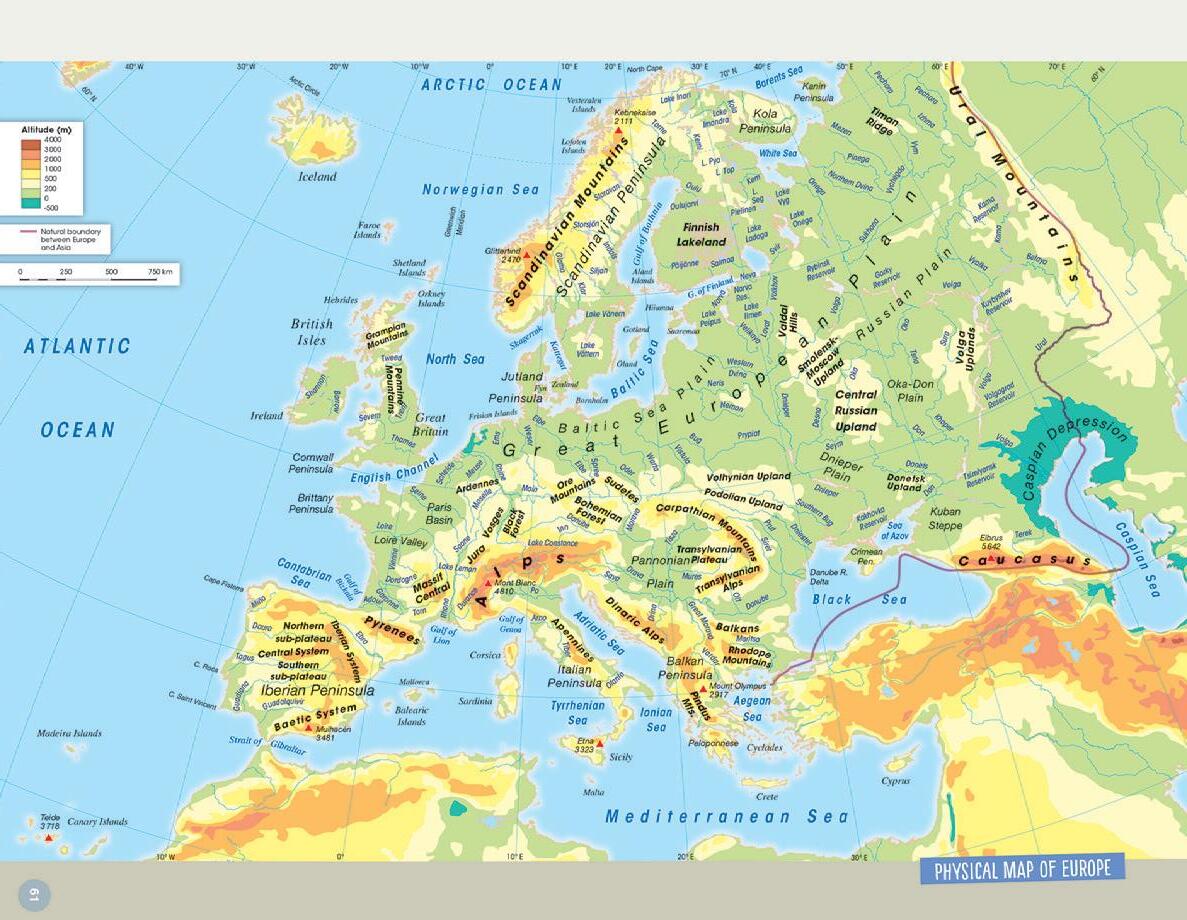
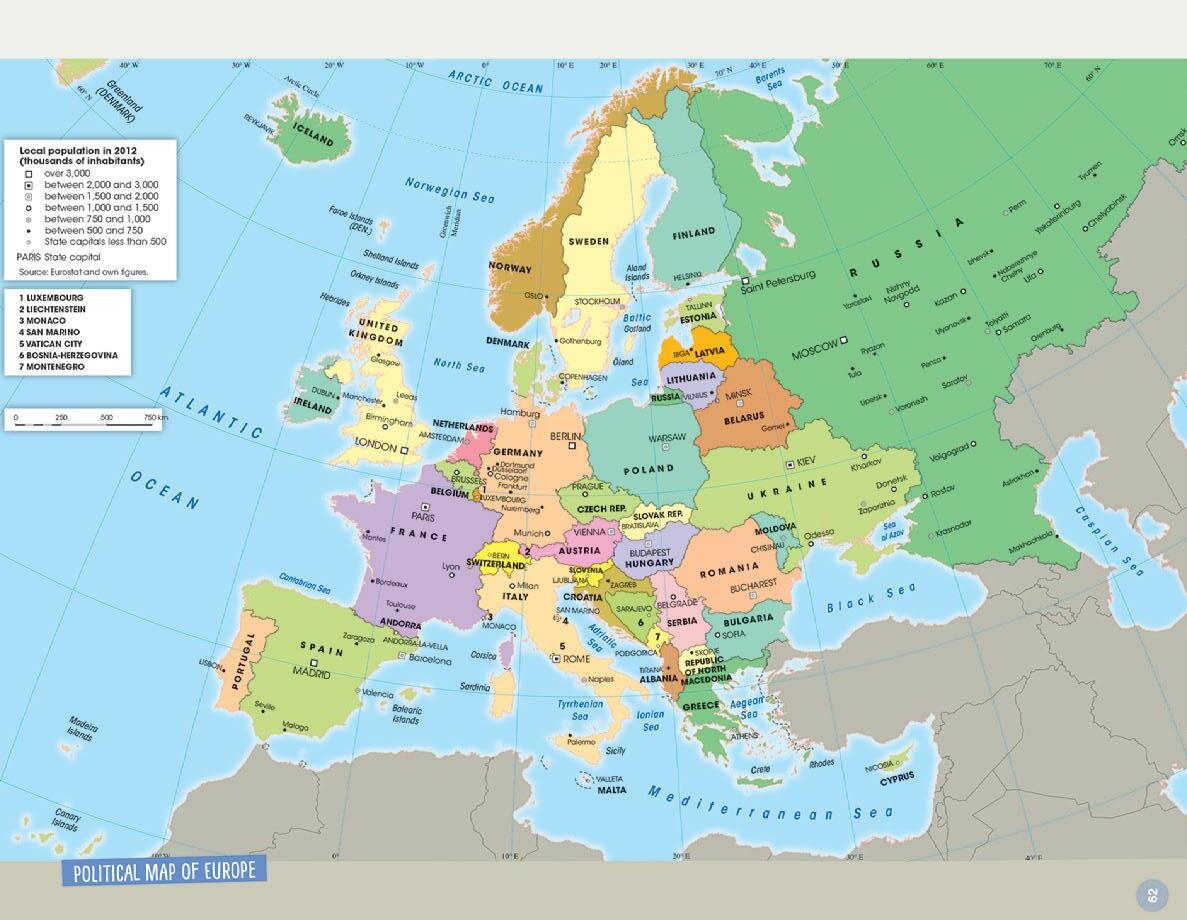
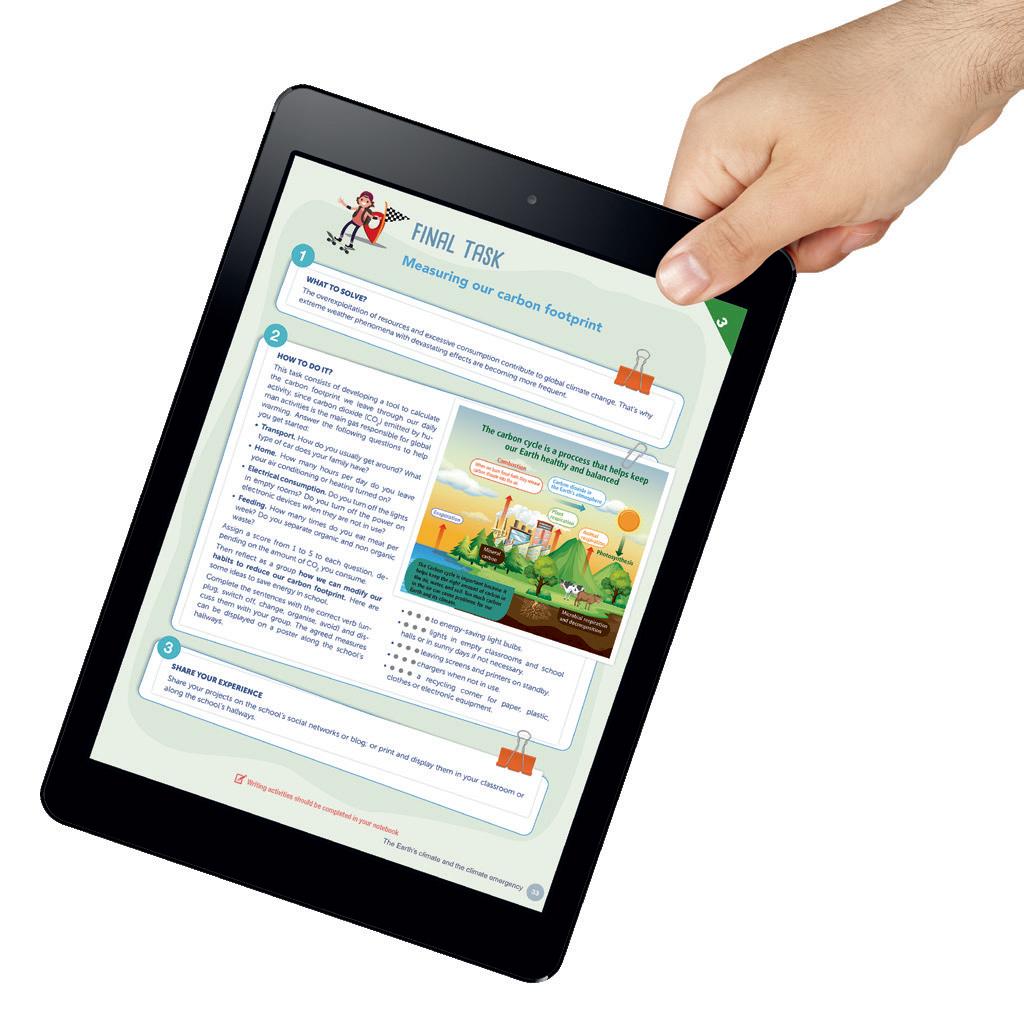
Extra global resources
• Online dictionary
• Reference websites
• Museums
• International institutions
• Media
Digital activities.
Glossary.
Digitised version of Learn in English with all the units and sections.
All the audio recordings related to the activities.
Links to online dictionaries and reference web pages.
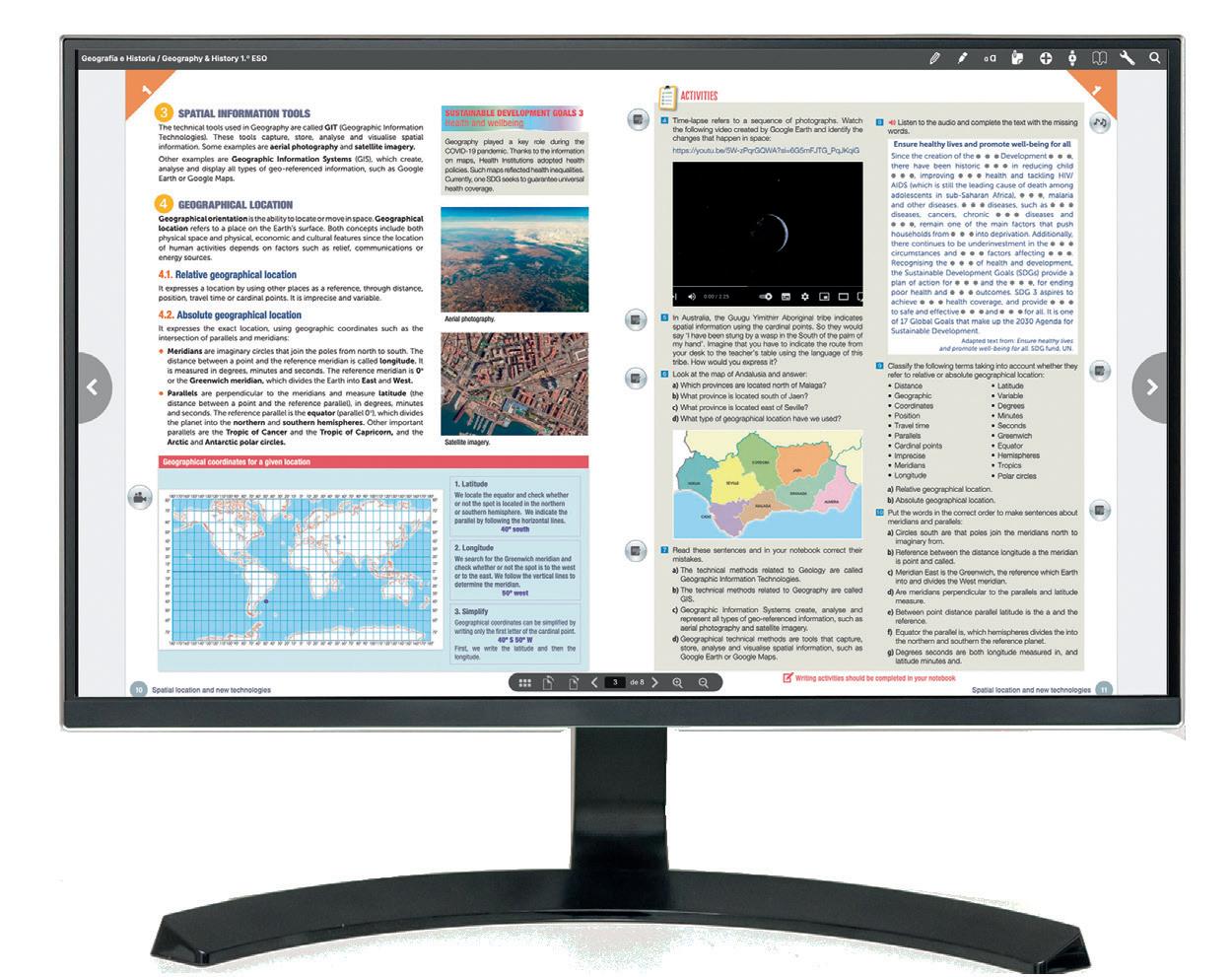
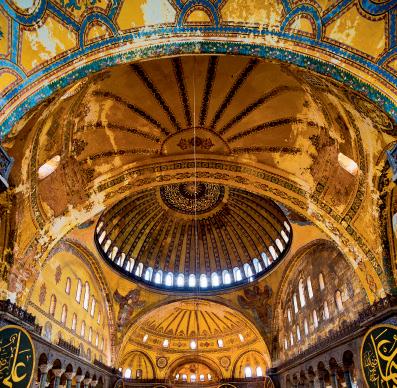
The Middle Ages in Europe began with the fall of the Roman Empire (476). Since the 3rd century, Rome suffered serious economic, social and political crises. Theodosius was the last emperor to govern the Empire. In order to administrate over it, he divided the Empire between his two sons: the Western part went to Honorius, with the capital in Rome; the Eastern part went to Arcadius with the capital in Constantinople.
The Western part of the empire suffered invasions from different peoples. The Romans called foreign peoples barbarians.
The Eastern Roman Empire survived the fall of Rome until 1453, when Constantinople was invaded by the Turks.
During the Early Middle Ages three civilisations settled around the Mediterranean Sea: the Byzantine Empire; the Christians and Germanic Kingdoms; and the Islam Empire.
Emperor Constantine I transformed the Greek city of Byzantium into the capital of the Eastern Roman Empire. The city was renamed Constantinople. It was situated between Europe and Asia. The city was a wealthy crossroads of land and sea routes.
In the Byzantine Empire, the Emperor was the main political and military leader. The territory was divided into provinces, with an administration and a powerful army that served the Emperor.
Society was hierarchical, divided into:
z Upper class: Emperor’s family, senior statesmen, high-ranking officials and local aristocracy.
z Middle class: officials, clergy, merchants, artisans, and free peasants.
z Lower class: servants and slaves.
Theological disputes led to a break between the Churches of Rome and Con stantinople, giving rise to the Orthodox Church.
Byzantium experienced an economic boom in the 6th century, thanks to agriculture veloped on noble estates by colonists and slaves), and trade in the Mediterranean (or ganised into guilds) which was favoured by the strategic location of Constantinople, and tax collection.
They preserved the legacy of classical antiq uity. Byzantine art synthesised characteris tics, materials and elements of Greco-Roman and Eastern art. The most important buildings were churches with a Greek cross and rectan gular or square floor-plans. They were deco rated with mosaics.
Germanic kingdoms
Ostrogoth kingdom Italian Peninsula and Dalmatia
Visigoth kingdom Southern Gaul and Hispania
Frankish kingdom Northern Gaul
Burgundian kingdom Northeastern Gaul
Alaman kingdom Rhine river region
Anglosaxon kingdom England
Early Middle Ages 5th to 10 th centuries
High Middle Ages 11th to 13 th centuries
Late Middle Ages 14th and 15th centuries
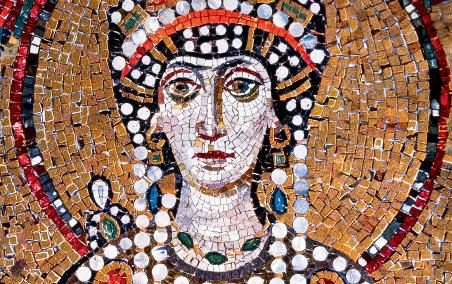


1 Read the questions and discuss your answers with your partner.
a) Why do you think the historical period we are going to study is named the Middle Ages?
b) During the Early Middle Ages there were conflicts among populations around the Mediterranean. Are there tensions nowadays among the same peoples?
c) What was the most peaceful period in the Mediterranean region?
d) What were the sources of the conflicts in the Mediterranean throughout history?
2 Put the words in the correct order to write complete sentences.
a) place the Western and Churches between took disputes Theological Eastern
b) between the of break Rome and The gave to the Orthodox Church Churches Constantinople rise
c) occurred the economic The of in 6th century Byzantium boom
d) the was on nobility’s estates developed Agriculture e) in Trade the organised into guilds was Mediterranean f) located for Constantinople trade strategically was g) of preserved the antiquity classical Byzantium legacy
3 When today we say someone is a ‘vandal’, we mean they behave in a barbaric, savage or destructive manner. Complete the text with the following words to learn about who the Vandals were: region, city, Europe, sack, looted, village, people, group.
The Vandals were a Germanic from central who inhabited the coastal regions of the Baltic Sea (Germany and Poland). They became infamous for their of Rome in 455. They destroyed the They properties and behaved in an atrocious manner. The word Vandal originates from Vendel, a in Sweden. The that migrated from this and sacked Rome became known as the Vandals.
4 Guess the word and complete the text to learn about the organisation of the Byzantine empire and its society.
The society in the Byzantine Empire wad dominated by the imperial f and the male aristocracy. The e was the main political and military leader. Society was h , and social groups were divided into privileged and the humble. The nobility, officials, the clergy and rich m were in the first group.
The a , free peasants and servants in the second one. The s were in a lower category. The majority of the lower classes followed the profession of their p . However the accumulation of wealth offered a small possibility for a person to better their social position. There was no a of blood, it was derived their wealth and status.
The territory was divided into p , with an administration and a powerful a at the service of the empire. In each province there was an important c . Constantinople became famously c
5 Solve the crossword puzzle to complete the sentences.
1. The city of Byzantium was renamed
2. During the Early Middle Ages there were three civilisations around the Mediterranean: the Empire, the Christians and Germanic Kingdoms and the Islam Empire.
3. The Western part of the empire suffered several
4. As of the 3rd century, began to experience serious economic, social and political crises.
5. The Romans called foreign peoples ‘ ’.
6. Emperor Constantine I made the Greek city of Byzantium the of the Eastern Roman Empire.
7. The Eastern Roman Empire survived the fall of Rome until the 15th century, when it was invaded by the
8. Byzantium’s strategic location between Europe and Asia helped it to economically.
6 2 Listen to the audio recording and complete the text with the missing words.
During the Middle Ages, much of Europe underwent a period of turmoil, ignorance and During the Early Middle Ages, from 476 to approximately 1100, European collapsed into The main cause of this decline was the lack of a strong . The Germanic kingdoms founded in the year 476 were not able to suppress the . There were so many highway that traveling became dangerous. Therefore, Europe suffered a decline in and manufacturing, education, and the arts. Cities became smaller and in some cases they practically disappeared, and Western Europe became a of poverty-stricken communities, where each one was practically from the rest of the world.
Adapted from The Record of Mankind, by Buske, Webster, and Wesley, E.
3.1.
Starting in the 5th century, Germanic peoples invaded the Western territories of the Roman Empire. They were organised into clans. They chose their king and were governed by customs. The had a subsistence economy and they used tering. Over time, they adopted some cultural features of the Roman Empire.
To try to stop the advance of the Germanic peoples, the Roman Empire en tered into an agreement with the Visigoths to restore order in the provinces. In exchange Rome allowed them to remain in Gaul. After the disap pearance of the Roman Empire, they were displaced by the Franks. Later, the Muslims invaded the Iberian Peninsula.
The Franks were Germanic people. In the 6th century they displaced the Visig oths to Hispania and managed to stop Muslim expansion for centuries.
The Carolingian dynasty reached its maximum splendour under Charlemagne, who tried to rebuild the unity of the Western Roman Empire, defend its borders and stop the Muslim advance. He reinforced the union between political religious power. The empire was divided into:
z Counties. Territories governed by a count, with military, administrative and judicial power.
z Marches. They were border areas, administered by a marquis with military authority.
SUSTAINABLE DEVELOPMENT GOAL 17 Peace, justice and strong institutions
Today armed conflicts continue to be a serious threat for millions of people. This is why today, one of the SDG is to guarantee the peace, the justice and strong institutions. In the years 2022 and 2023, the number of deaths related to armed conflicts increased. What armed conflicts are taking place right now?

The economy was based on spread of Islam. Cities disappeared as economic centres. Society was chical and divided into:
z The nobility and ecclesiastical authorities.
z Free people: officials, the rest of the clergy, merchants, artisans and peasants.
z The servants.
Charlemagne encouraged the church.
He established schools, where the arts and humanities, mathematics and sciences were taught. A noteworthy scholar of the period was:
A prime example of Carolingian architecture was Aachen Palace, the residence of the emperor. Carolingian buildings were precursors to the Romanesque style. Important activities included goldsmithing and bookbinding.


Mediterranean Sea
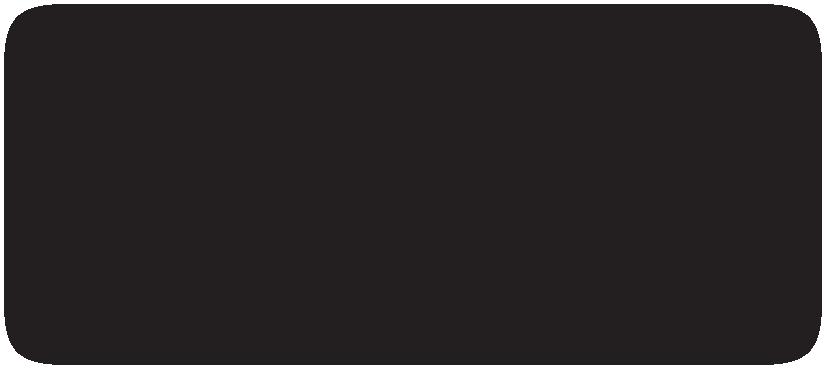

Kingdom until the death of Pepin the Short Charlemagne’s conquests Dependent territories

Mediterranean Sea
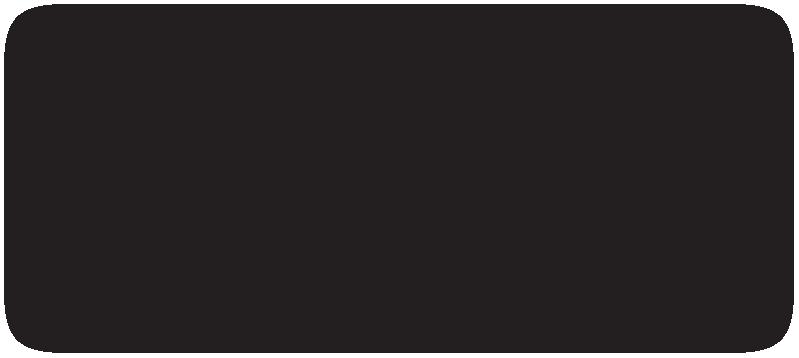
Carolingian Empire Boundaries Division of Kingdom Lotharius’ Louis Dependent

Kingdom until the death of Pepin the Short Boundaries of the Empire in 814

Division of the Carolingian Empire Kingdom of Charles the Bald Lotharius’ kingdom
Louis the German’s kingdom Dependent territories
7 2 At the National Archaeological Museum, there’s an itinerary called ‘Medieval World: Visigothic Kingdom of Toledo and Al-Andalus’. Listen to the audio recording about the Visigoths’ remains and choose the word to write the correct sentences in your notebook.
a) The Visigothic Code is a set of laws/songs first promulgated by king Chindasuinth.
b) This code applied equality/quality to the conquering Goths.
c) The code abolished/abrogated the old tradition of having different laws for Romans and non-Romans.
d) All subjects/objects under the Visigothic Kingdom became hispani.
e) This code become the basis for Spanish law throughout the Middle/Modern Ages.
8 Look at the picture in the previous page and complete the text using these words: octagonal, semicircular, splendour, Aachen, mosaics, chapel, pillars, dome, Rome, majestic.
It is the of the palace, commissioned by Charlemagne and built between 790 and 805. Its floor plan is and the chapel is covered with a . Structural support is provided by walls, and arches. The dome has openings through which light enters and is covered with religious The Palatine Chapel in Aachen reflects the achieved by the Carolingian Empire. When Charlemagne chose Aachen as his capital, he wanted it to be , like ancient or Constantinople.
9 2 Listen to the audio recording and complete the text. In the past, the lands that belonged to lords were worked by . The conditions they endured were . Nowadays, illegal provides, in many cases, labour. When immigrants are undocumented they are totally , and whoever hires them saves on labour costs and therefore exercises competition.
Adapted text: Businessmen hire illegal immigrants because they know that they are completely unprotected, by Beatriz Losada, uimp.es.
10 Lower-case letters are a smaller version of capital letters. Not all look the same as their upper-case counterparts. Find out who invented the lower-case letters we use today and what these letters were originally called.
11 Carolingian society was pyramidal or stratified and formed the basis for the subsequent feudalism. There were two large groups or classes: the privileged (nobles and clergy) and the unprivileged (craftsmen, traders and farmers). Complete the diagram with the following words: missi dominici, imperator, bishops, freemen, servants, nobility, vassals.

During the Early Middle Ages there were displacements of civilisations caused by ‘barbarian invasions’. Today, large displacements of people continue to occur in the Mediterranean area due to armed conflicts. Here are some examples:
Syrian civil war 2011
Russia and Ukrainian war 2022
Over 5 million Syrians have been displaced since the start of war towards Turkey, Lebanon or Jordan, or have attempted to cross the Mediterranean to reach Greece or Italy. Thousands of people perished trying to cross the sea.
Over four million people have taken refuge in the European Union. The war still goes on.
Israel and Gaza war 2023 Refugee camps in Gaza have been attacked and thousands of people in the northern end of the strip have been forced to evacuate.
A.Say whether the following sentences are true or not, and answer the question: Is the Mediterranean now a safer place than in the Middle Ages?
1. Mediterranean countries today do not have social or economic crises.
2. Refugees come from Northern European countries and cross the Mediterranean Sea looking for a peaceful life.
3. Nowadays the human rights of migrants fleeing from armed conflicts are frequently not respected.
B.
Investigate. What conflicts are Mediterranean peoples fleeing from? What are the routes they use?
C.
Identify. Are there people in your town from other places? Why have they moved?
In the 6th century the Arabian Peninsula was inhabited by nomadic tribes. The most important cities were Medina and Mecca. The Arabs were polytheistic and had no political unity.
Muhammad, a merchant who had a revelation from the archangel Gabriel, spread a new faith called Islam. In 622 he was forced to flee to Medina. This event is known as the Hijra and marks the beginning of the Muslim calendar. Muhammad created his first community of believers (ummah) in Medina and in 630 he returned victorious to Mecca. From there he proclaimed jihad or 'holy war' and spread Islam to all of Arabia.
Muhammad’s teachings were collected in the Quran, the sacred book of Islam. Another important text of Islam is the Sunnah. It is a record of the teachings, deeds and sayings of Muhammad. The Muslim place of worship is the mosque, which is also a cultural and educational centre.
After the death of Muhammad, the caliphs succeeded him, but they were divided into:
z The Sunnis or orthodox, who accepted the Quran and the texts of Muhammad.
z The Shiites, who did not accept these texts.
The Arabs conquered the richest provinces of the Byzantine Empire during the 7th century. They besieged Constantinople but could not conquer it. Later, the Empire remained in the hands of the Turks who conquered the capital of the Byzantine Empire, putting an end to the period called the Middle Ages.
The Orthodox Caliphate (632-661) Muhammad’s family ‘inherited’ the title of caliph. Muslim rule was consolidated throughout the Arabian Peninsula.
The Umayyad Caliphate (661-750) The biggest expansion of Islam. They had their capital in Damascus.
The Abbasid Caliphate (750-1258)
Muslim expansion ceased. The disintegration of the Muslim Empire began. Baghdad becomes the new capital.
The keys to the rapid expansion of the Muslim Empire were:
z The desire to spread their faith (Holy War).
z A powerful army of volunteers mainly made up of a highly-skilled light cavalry.
z The desire to seize the wealth of the Byzantine and Persian empires.
z The weakness of the Byzantines and Persians after long years of war.
z Religious tolerance with the conquered peoples.
4.3.
Muslim society was organised as follows:
z The aristocracy was made up of families close to the caliphs and emirs.
z An intermediate social group, without political power.
z The popular masses, whose situation was precarious. It was made up of craftsmen, merchants and peasants.
z The slaves, who came from wars or trade. They had to be treated adequately because mistreatment led to their freedom. They could not hold political or religious positions.
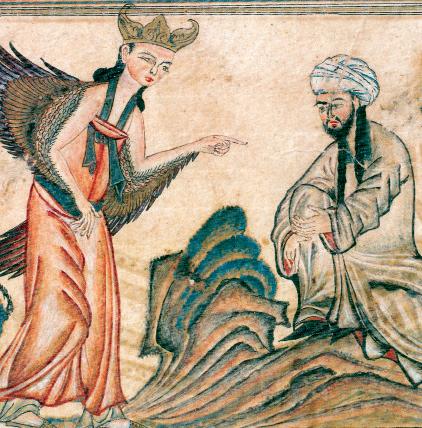
Illustration showing the moment in which the archangel Gabriel revealed himself to Muhammad.
The five pillars of Islam
Professing the faith.
Praying five times a day.
Fasting during Ramadan.
Practising alms-giving.
Making the pilgrimage to Mecca at least once during your lifetime.
Political structure of the Muslim Empire
Caliph: political and religious head of Islam
12 Choose the correct word of each pair to complete the sentences.
a) In the 6th century the Arabian Peninsula was habited/inhabited by nomadic tribes.
b) The most important cities/people were Medina and Mecca.
c) Muhammad, a merchant/peasant, promoted Islam.
d) From Mecca/Medina, Muhammad proclaimed jihad or 'holy war'.
e) The Bible/Quran contains the precepts of Islam.
13 Match each beginning with the end of the phrase to write a biography of Muhammad in your notebook.
a) Muhammad was born in the Arabian Peninsula…
b) His uncle, Abu Talib, took care of him…
c) He worked with his uncle…
d) When he was 25 years old, he married a wealthy widow and…
1. …to sit and think in peace and solitude.
2. …as a merchant, leading caravans.
3. …and they decided to attack Mecca and destroy the ancient idols.
4. …he told his wife and his relatives what the angel had said to him.
e) He liked to go to the Hira cave… 5. …an angel appeared before him.
f) When he was 40 years old… 6. …around 570 AD.
g) The angel told him: ‘You are Allah’s prophet now. You have to go…
7. …most of the inhabitants of Mecca didn’t.
h) When Muhammad returned to his city… 8. …after his parents’ death.
i) Some people believed him, but …
9. …This year is considered the first year of the Muslim calendar.
j) He had to leave his town and go to Medina in 622… 10. …most of the inhabitants of Arabia were already Muslims.
k) In Medina he gained a lot of followers… 11. …and tell the people to worship no other god than Allah.’
l) He died in 632. At that time… 12. …they had three sons and four daughters.
14 Say whether the following statements are true or false. Correct the false statements in your notebook.
a) Islam’s first conflicts were with the Persian and Chinese empires.
b) The Muslims were not able to conquer the Byzantine Empire.
c) The Muslims were victorious over the Franks at Poitiers.
d) The Chinese stopped the advance of the Muslims at the Battle of Talas.
15 Find the missing terms of these sentences in the word search.
a) After the death of Muhammad, the succeeded him.
b) The or Orthodox accepted the Koran and the texts of Muhammad.
c) The did not accept Muhammad’s texts.
d) The Arabs conquered the richest provinces of the Empire during the 7th century.
e) The Arabs besieged but could not conquer it.
f) The period called the Middle Ages ends when the conquer Constantinople.
16 In your notebook, complete the following diagram about the teachings of Islam:
4.4. The economy of the Islamic Empire
It was based on crafts, trade and agriculture with very diverse crops and innovative farming techniques. They made and sold textiles from livestock.
Crafts developed in the cities and skills were organised into districts. Merchants travelled by sea and land, exchanging luxury goods, furs, fabrics, salt, spices and slaves.
Cities were very important in Islamic civilisation as economic, political and cultural centres. The layout of medieval cities was irregular, with very narrow streets and little planning. The medina was in the centre, set around the great mosque. The souk or market and other buildings stood around it.
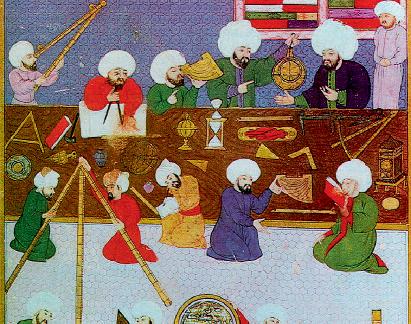
Culture and science reached an important peak during the Muslim Empire. In addition, large libraries were created where works of classical antiquity and Christianity were collected, as well as those written by the Muslims themselves. So thanks to the work of Muslim scholars, knowledge has been preserved that otherwise would have been lost.
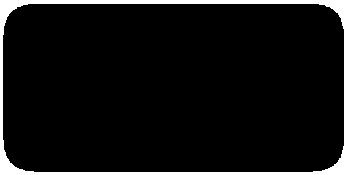
4.5. Culture, science and the arts in Muslim civilisation
The Islamic Empire developed a culture that synthesised all the knowledge, scientific advances and art of the peoples they conquered or with whom they interacted. They brought gunpowder, the compass and paper from Asia to Europe. They made significant contributions to algebra, astronomy, medicine and engineering.
Their most representative buildings were mosques for worship. They used brick, plaster and wood to create a wide range of shapes and interior decoration.
Following the death of Charlemagne in 814, his empire was divided into independent kingdoms.
5.1. The second wave of invasions
The Muslim Empire controlled southern Europe. However, in the Iberian Peninsula the Christian kingdoms stopped the Muslims from crossing the Pyrenees. The Mediterranean Sea was under the control of Muslim pirates. The Vikings spread out from the Baltic Sea the Black Sea, and invaded Normandy, Britain, Iceland, Germany, France and Italy.
The insecurity created by the invasions caused the population to go to the countryside in search of the protection of the nobles. This system was the basis of feudalism. The peasants were obliged to give part of their harvest to the lord. The Church also had the same rights as the feudal lords.

Mosque of Córdoba is a
example. It is made up of an arcaded courtyard with a fountain for the purification of the faithful before entering the mosque, a minaret or tower for calling people to prayer, and a prayer hall with aisles separated by columns or pillars. The qibla wall facing Mecca, the mihrab in the middle of the qibla and the mimbar or pulpit are in the prayer hall.
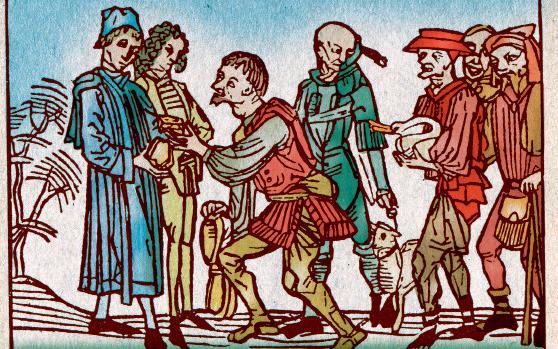
17 Put the letters in the right order to make words and complete these sentences about the Islamic Empire.
a) The was made up of families close to the caliphs and emirs. oaistccryra
b) The popular masses were in a situation. icpearorsu
c) They had aslvse
d) The was based on agriculture, crafts and trade. nemcoyo
e) They developed a culture that synthesised all : scientific advances and the art of the peoples they conquered. dkgwnoeel
f) They brought gunpowder, the and paper from Asia to Europe. scpomas
g) The made important contributions to algebra, , medicine and engineering. aostyrnmo
h) The most representative buildings were smouseq
18 Search on the internet and in your notebook, match the following descriptions of Islamic inventions to the name of the invention. Next, find information about the inventor (if known) and the period in which each item was invented.
a) Nowadays, a very popular drink that helps us to stay awake.
b) Optical instrument that would eventually contribute to the development of photography.
c) Product we use to wash our hair.
d) Flying machine without an engine.
e) Instrument in the shape of a small knife used to perform surgery
1. Scalpel
2. Coffee
3. Hang-glider
4. Fountain pen
5. Camera obscura
f) Writing instrument that is dipped in ink 6. Shampoo
During the Middle Ages three great coexisted around the Mediterranean. How they each other is not very , but through the texts appearing in different , it can be deduced that Andalusian Muslims viewed Christians , and vice versa. Currently, in colloquial and in the media, terms referring to the world and Arab culture are used interchangeably, which in some way Western perception and a lack of about religion and culture.
19 Guess the words to complete these sentences in your notebook.
a) After the death of a e a e in 814, his e i e was divided into independent i o .
b) The u l m Empire controlled s th rn Europe.
c) The ings spread across the Bal Sea to the Black Sea, Normandy, the United Kingdom, I and, ma , France and Italy.
d) The ins rit created by these invasions caused the population to go to the c ntrys d in search of the protection of the n bl s
e) The p s nts were obliged to give part of the ha st to the lord.
f) This situation was the basis for eu a i
g) The urc had the same ri ts as the feudal lords.
20 2 Listen to the audio recording and complete the text in your notebook to learn about the situation of women in Islam.
Although in many Muslim women do not have the same as men and are considered , this idea is not contained in the Quran, which advocates between men and women.
Furthermore, the Sharia or law says that both are complementary to each other. However, the situation for varies greatly from one country to another. In , women generally enjoy a great deal of and can dress as they like, although it depends on the area. But in they are required to wear a , which is a garment that covers their whole . The most common item of clothing among Muslim women is the Islamic or hijab. This is considered a of oppression by many non-Muslims and its use has pro-voked great controversy in some European countries, where the number of Muslim is on the rise.
A.
Complete the text with the right words: Muslim, civilisations, chronicles, poorly, knowledge, perceived, reflect, clear, speech.
B. Look at the dictionary and write the definitions of Arab and Muslim. Then, answer the question: Does the word Arab mean the same as Muslim?
C.
Social stereotypes may be defined as beliefs that various traits or acts are characteristic of particular social groups. Popular stereotypes rely on assumptions, are often mistaken for reality, and usually have negative connotations. Read the following sentences and identify the stereotype:
1. In western countries, people think that East Asian students are excellent at maths.
2. In Occident countries, people think that black women speak very aggressive.
3. Arabs do fasting in Ramadan.
Writing activities should be completed in your notebook
Present simple. Verb ‘to be’
It is used to talk about situations and states in the present time.
z I am an Arab z We are Arabs
z You are an Arab z You are Arabs
z She/He/It is an Arab z They are Arabs
For negatives, it is used not after the verb.
z I am not an Arab z We are not Arabs
z You are not an Arab z You are not Arabs
z She/He/It is not an Arab z They are not Arabs
For questions, we change the order of the verb and the person.
z Am I an Arab? z Are we Arabs?
z Are you an Arab? z Are you Arabs?
z Is he/she/it an Arab? z Are they Arabs?
1 When did the Middle Ages develop?
The Middle Ages began with the fall of the Roman Empire and ended in 1453, with Constantinople was conquered by the Turks.
2 What were the civilisations around the Mediterranean during the Middle Ages?
The Byzantine Empire, the Germanic peoples and Islam.
3 Why did the Roman Empire disintegrate?
Due to the economic, social and political crisis since the 3rd century in Rome and due pressure from the barbarian peoples.
4 What happened to the territories of the Roman Empire after its defeat?
In the eastern part, the Byzantine Empire was established. Starting in the 5th century, the Germanic peoples invaded the western territories.
5 What did Charlemagne achieve?
He attempted to rebuild the Western Roman Empire, stopped the Muslim advance and promoted a cultural renaissance.
1 Use the right form of the present simple in the following sentences.
a) Arabs a people with a common culture whose most relevant feature the language.
b) This building a good example of Arabic architecture.
c) The Turks Muslims.
d) Muslims practitioners of the Catholic religion.
e) this language Arabic?
2 Complete these sentences with the present simple of the given verbs.
a) I (like) this type of architecture.
b) The Byzantine Empire (exist, not) anymore.
c) In Eastern Europe the Orthodox religion (to be) practiced.
d) Rome (to be, not) the seat of Islamism.
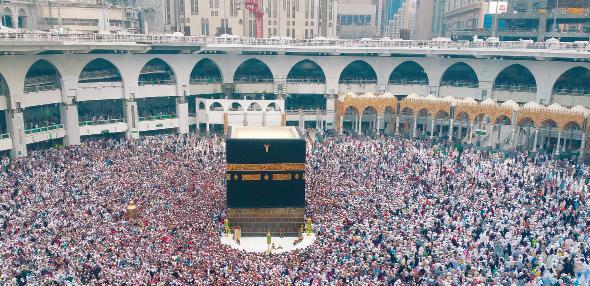
6 Who promoted Islam?
Muhammad, a merchant who had a revelation from the archangel Gabriel, spread a new faith called Islam. After his death, the caliphs conquered the richest provinces of the Byzantine Empire and spread the Islam.
7 What are the major denominations of Islam?
After the death of Muchammad, the caliphs succeeded him but they were divided into: the Sunnis or orthodox, who accepted the Quran; and the Shiites, who did not.
8 How did the Muslim invasion develop?
Starting in the 7th century the Muslim Empire expanded from the Arabian Peninsula westward through the Mediterranean and also towards the east.
9 What were the contributions of Islamic civilisation? Islamic civilisation brought gunpowder, the compass and paper from Asia to Europe. It produced advances in the areas of mathematics, astronomy, medicine, art and engineering.
10 Why did feudalism develop?
During the 9th and 10th centuries a wave of attacks caused the population to migrate to the countryside and seek protection from the nobles. In exchange, they worked the nobles’ lands and were paid with part of the harvest.
1
Currently, many problems still exist among Mediterranean countries. One of them is immigration and the arrival of refugees from other countries. In many European countries with large numbers of refugees, this has resulted in xenophobic, racist and anti-immigration social trends.
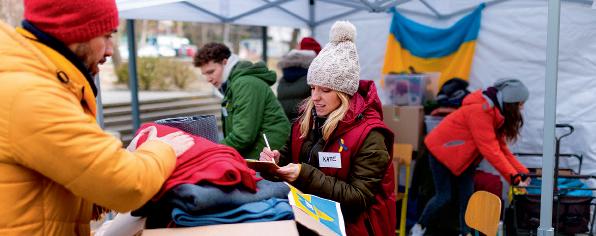
2
Think about these questions and share your ideas with your classmates:
• Who is a refugee?
• What is an immigrant?
• What actions are racist?
• What is xenophobia?
• Is it acceptable?
• Have you seen racism around you?
• What could be done to eradicate racism and xenophobia from our society?
• How could we facilitate the integration of immigrants and refugees into our society?
Once you have answered all these questions, it’s important to take a position and send a clear message about xenophobia. Good speech writing is the art of crafting words into a coherent and memorable message. Here are some key elements of great speech writing:
• It begins with a purpose and the audience it seeks to engage.
• The central message must be well structured, ensuring that the audience understands and retains the key points.
• The message is divided into a captivating opening, a well-organised body, and a conclusion that reinforces the main message.
• It’s important to give examples, and relatable anecdotes to connect with the audience on both intellectual and emotional levels.
3
The most persuasive speeches should be spread through the school’s social networks.

1.1.
It was made possible thanks to advances in technology: water and windmills replaced animal traction; the mouldboard plough, metal animal collars and horseshoes appeared. Also, new cultivation methods arose such as the three-field system of crop rotation and the use of natural fertilizers. This progress resulted in an increase in agricultural production, trade with surpluses, an increase in population and the establishment of cities.
in Europe
Graph on population growth in the 11th-13th centuries.
Source: Massimo Livi Bacci, Introducción a la demografía.
Local commerce was carried out in artisans' workshops and markets. Long distance trade took place at annual fairs.
Trade routes were established: the Mediterranean, the Atlantic and the Baltic. Associations of merchants, payments in currency, and other financial instruments such as credit were created, giving rise to the birth of banking.
2.1.
The new social class that emerged was the bourgeoisie, made up of merchants, artisans and liberal professionals, who became rich thanks to trade and the production of goods and services. The new bourgeoisie had both economic and political power. The governing of cities had previously been in the hands of artisan guilds, for the regulation of production and trade. In some localities, democratic government systems such as municipal councils were established. Decision-making was through assemblies. Women were always subordinate to men, who were considered the heads of the family. Many women, primarily members of upper class or noble families, became nuns.
2.2.
In the cities, new jobs emerged, such as public notaries, builders or doctors. In squares, markets, or on commercial streets, artisans of the same trade were grouped together. Public buildings were constructed, such as town halls, churches, and schools. New infrastructure was built, such as walls, to protect against attacks; bridges and sewage systems; and streets were paved.
trade areas and



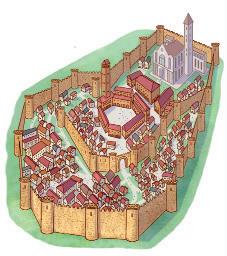
• There was a square in the centre where the cathedral, the city hall and the marketplace were situated.
• The streets were narrow with an irregular layout and no local services.
• They were surrounded by walls.
• Minority religious groups like Jews had to live apart in their own neighbourhoods.
• Buildings like hostelries, hospitals and universities also existed in larger cities.
1 Work in pairs and discuss these questions before reading the unit. Write down your conclusions.
a) During the 13th and 14th centuries, cities experienced improvements and new professions appeared. What factors led to this? Which professions still exist today?
b) As kingdoms were strengthening their power, more wars also occurred. Why? Does this continue to happen today?
c) The first universities were founded in the Late Middle Ages. Investigate what was studied in them.
d) In the Late Middle Ages, an artistic revolution took place. What changes did it bring?
2 Look at the images displaying the structure of the city. Answer the following questions and justify your answers.
a) Do walled cities still exist today?
b) How tall are the buildings in each of the images?
c) Can you estimate the population density at each location?


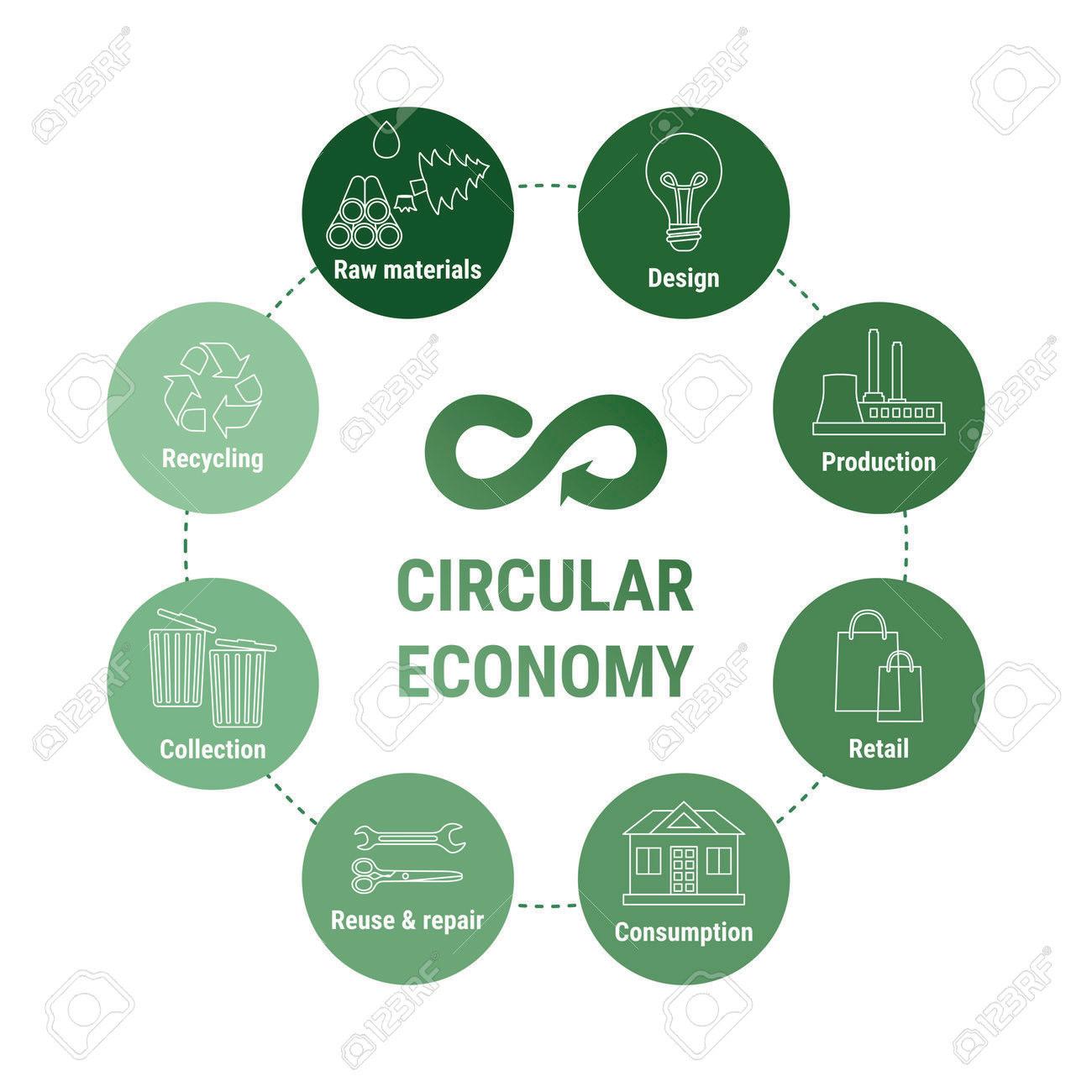
3 Agricultural systems have progressed quite a bit since the Late Middle Ages. What types of innovation can we observe in a modern-day crop field? How were agricultural tasks carried out in the past?
4 The trades of the past have left their mark on modern cities. Today, many streets still reflect the names of the professional guilds' workshops that were located there. Search your local street map for street names dedicated to trades or professions and research the type of work they performed.
5 Covid-19 isn't the only pandemic to have devastated humanity. Did you know that it was during the Late Middle Ages that the term ‘quarantine' first appeared, or that the bacteria responsible for the plague (yersinia estis) is still being researched today? Read and complete the following text about Humanity's first quarantine, which took place in Dubrovnik in 1377, using these terms: contact, closure, epidemic, spread, burned, criminal, criteria, neighbouring, anarchy.
In the Middle Ages, the origin of diseases, such as the Black Death, was unknown. What was known is that personal favoured contagion. The authorities ordered the of the affected cities, although many wanted to flee to other places to be safe. Since so many people were infected, they the disease, so extreme measures became necessary. Travelers were obliged to spend a month in towns, such as Ragusavecchia or Mercana. The inmates lived in barracks that were when the danger passed. ‘Every man for himself' predominated in an atmosphere of , with a disturbing increase in acts. Justice had no instruments to punish robberies in abandoned houses or defenceless people. It was not until the Paris International Conference in 1903 when a large number of countries agreed to apply identical for quarantines.
Adapted text: www.lavanguardia.com
The circular economy aims to ensure that raw materials remain in use longer, to avoid resource scarcity and competition among countries to obtain them, and also to reduce pressure on the environment. This production and consumption model aims to extend products' life cycle. Interestingly, it already existed in the Late Middle Ages: they used organic waste to fertilise the land. Today, for example, oil is reused to make soap.
A.
Based on the proposed inf ormation at economiacircular.org, prepare a summary explaining how the circular economy works.
B. Search the internet for companies, preferably in your area or nearby, that use a circular economy model. Do you think this is good for society? Why?
C . Locate the waste disposal sites in your area on a map.
3.1. The guilds
Guilds were associations of artisans specialised in a specific trade. They regulated production and commerce and played a political role. Their masters participated in municipal councils.
3.2. Workshop organisation
Generally, the master directed and supervised the apprentices and more experienced workers. In some cases, day labourers were hired to perform specific tasks.
As for women, widows could manage their late husband's business if they lacked a close male relative and did not remarry. They were not allowed to train an apprentice by themselves. Many trades, such as silk working and candle making, were dominated by female workers.
4.1. Literature and philosophy
The minstrels recited and played instruments at courts and fairs, echoing he roic deeds through the oral tradition. During this period, new literary genres emerged, such as chivalric romances, lyrical poetry as the Cantar de Mio Cid. The classics of ancient philosophy, such as Plato or Aristotle, were rediscovered, and works appeared by medieval thinkers such as Thomas Aquinas, who sought to integrate Aristotelian philosophy and the Christian religion; or Christine de Pizan, ered a precursor of Western feminism.
4.2.
Between the 11th and 13th centuries, cathedral schools run by the Church taught religious knowledge. They were mostly attended by children of the nobility and clergymen. Other institutions, called municipal schools, were attended by the children of the bourgeoisie, who were taught reading, writing, accounting, law and medicine. Usually, the teachers were friars who lived in the city and subsisted on alms.
4.3. Early universities
They emerged in the middle of the 12th century, thanks to the interest of kings and bishops. They evolved from the cathedral schools, which over time became disconnected from the Church. They were made up of specialised academic centres called faculties. Generally, there were four: Liberal Arts, Medicine, Law and Theology. The first universities appeared in Bologna, Oxford, Paris, Palencia, Salamanca and Cambridge.
Medieval artisans' workshop
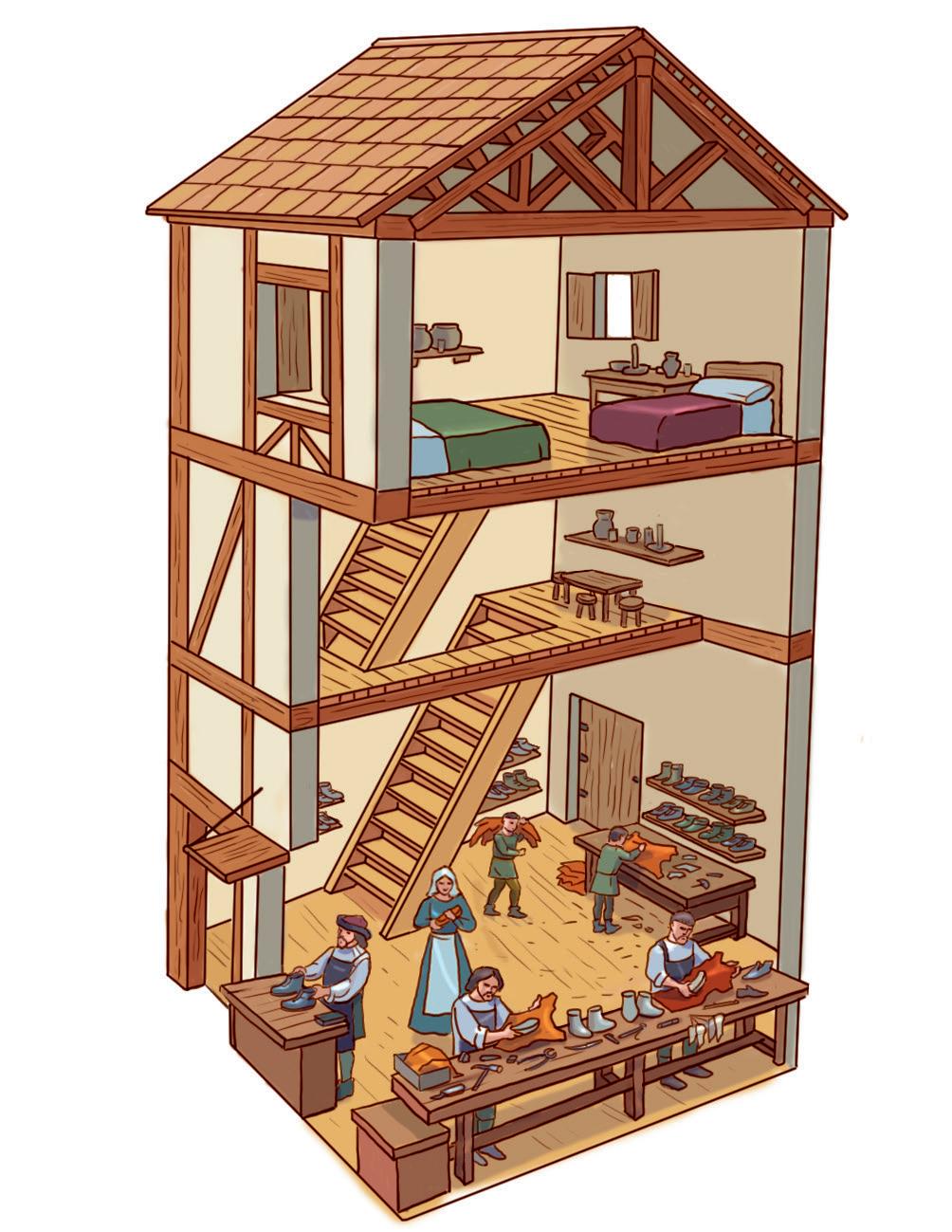
Cambridge
Oxford
Coimbra
Palencia Salamanca
Lisbon
Paris
Orleans
Angers
Toulouse
Valladolid
Lérida/ Lleida Montpellier Perpignan
Vercelli Prague
Treviso Perugia
Padua
Cahors Grenoble Avignon Reggio Siena Florence Bologna
Rome Napoli Salerno Piasenza
Mediterranean Sea

Cathedral Schools that existed before 1200 and later became Universities Universities founded in the 13th century Universities founded in the rst half of the 14th century


6 2 Listen to the audio recording and complete the text with the missing words.
Christine de Pizan was in Venice in 1364. She was a humanist , poet and writer. Her bestknown work is . Daughter of Tommaso de Pizan, a doctor and , she was able to develop her interests. She died in Possy (France) in 1431. She is considered a precursor of Western , since she stirred on the situation of women's at that time.
7 Use the following table to classify these concepts: horseshoes, workshops, annual fairs, windmills, payments in currency, fertilisers, markets, credit, fallow fields, trade routes.
9 University studies provided a foundation for the preparation of professional activities or scientific research, which began in the late Middle Ages. What did students have to do to get into University? And today?
10 Complete the sentences with the correct words.
a) The was made up of merchants, artisans and liberal professionals.
b) The of cities used to be in the hands of artisan guilds.
c) In municipal councils, decision-making was through .
d) were always subordinate to men, who were the heads of the family.
e) In the cities, new emerged, such as public notaries, builders or doctors.
f) In squares, markets, or on commercial streets, of the same trade were grouped together.
g) Public were constructed, such as town halls, churches, and schools.
h) New were built: walls, bridges and sewage systems.
8 Complete the following text using these connectors: generally, between, thanks to, under, that is, which.
the 11th and 13th centuries, the cathedral schools, the authority of the Church, taught religious knowledge. They were attended by the children of the nobility and clergymen. Other institutions, called municipal schools, were attended by the children of the bourgeoisie, who were taught reading, writing, accounting, law and medicine. The first universities emerged in the middle of the 12th century, the interest of kings and bishops. They evolved from the cathedral schools, over time became disconnected from the Church. They were made up of faculties, , specialised academic centres.
i) The were associations of artisans from a specific trade.
11 Complete the sentences with these words: wrote, specific, fairs, minstrels, workers, labourers, master, instruments, poetry, apprentices, epic, silk, genres, trades, workshops, female, romances.
a) In , the directed and supervised the and more experienced .
b) In some cases, day were hired to perform tasks.
c) Many , such as working and candle making, were dominated by workers.
d) The recited and played at courts and
e) New literary emerged, such chivalric , lyrical or songs.

An ecological footprint is an indicator of sustainability that measures the area necessary to produce resources and assimilate waste. At footprintcalculator.org you can figure out your own ecological footprint.
A.
Figure out your ecological footprint using the link provided. Were you surprised by the result?
B. Discuss with your classmates: What measures can you come up with to transform your town's ecological footprint? Are you aware of any measures that are already underway?
Kings acquired more and more power. Some ruled over authoritarian monarchies. They required the support of a royal council, made up of the king's relatives, key noblemen and religious authorities. Royal courts emerged, in which the city's various social classes were represented, and they almost always convened to approve a new tax.
Between the 11th and 14th centuries, the prominent kingdoms in Europe were:
z In the centre: France, the Duchy of Aquitaine and the Holy Roman Empire.
z In the north: Norway, Sweden, Scotland, Ireland and England.
z In the south: Muslims and Christians (disputing control of the Iberian Peninsula), the Church States, Naples and the Byzantine Empire (invaded by the Ottomans).
z In the east: the Slavic peoples and the kingdoms of Poland and Lithuania.
Throughout the 13th century the climate cooled and heavy rains ruined crops, causing food shortages, famines and high mortality. These conditions led to a dire economic crisis and social conflicts. This situation is often referred to as the crisis of feudalism in the 14th century.
To maintain their economic and political privileges, the nobility resorted to war:
a) The Hundred Years' War. The confrontation between France and England lasted 116 years (1337-1453). Joan of Arc was responsible for freeing the French territory from English servitude. At the same time, other confrontations arose: the War of the Two Peters between Castile and Aragon (1356-1369); or the Scottish War of Independence (1286-1357) against England.
b) Social revolts: some union corporations rose up against the established order and formed alternative governments. There were uprisings by salaried workers in certain industries; and against Jewish communities as well.
c) The crusades: military expeditions to expel the Muslims, ordered by the Pope. Military orders were established in the conquered territories.
d) The Western Schism: a power dispute within the Catholic Church, (two papal sees). It was resolved in 1414, at the Council of Constance, through the appointment of new pope, Martin V.
During the 14th century, Western Europe was hit by several Black Death epidemics. Between 30 % and 60 % of the population died.
Gothic art emerged in France in the 13th century and spread to the rest of Europe. Its buildings reflect power and urban wealth. Gothic architecture is essentially urban and the cathedral was the most prominent building in European cities. Gothic cathedrals were large, tall, luminous buildings, which had a number of new elements: pointed or ogival arches, rib vaults, buttresses, flying buttresses, pinnacles and stained glass windows. Thanks to the new support structures, the buildings could be taller and larger windows could be opened along the walls.
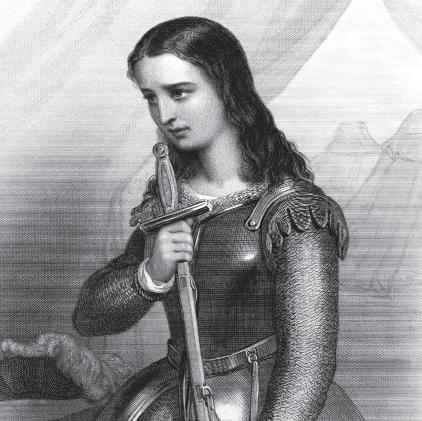
Print of Joan of Arc. Also known as the Lady of Orleans, she became famous for her bravery in the Hundred Years' War. Today she is still revered as a hero in France. Many cities are experiencing uncontrolled growth and high levels of pollution. What would you propose to improve sustainability in your area?
11
cities and communities

8. Rose window
9. Portal with pointed arches
10. Buttresses
11. Flying buttresses
12. Crossing
13. Altar
14. Ambulatory
12 Complete the following text about the Seville Cathedral's Gothic art with the terms you will find in the word search.
The of Seville is one of the best examples of Gothic . Its expand daily as the changes. They experience an movement in the morning and a movement at the end of the day, as occurs when in and out, in a perfect cycle.
d) The royal council was made up of the king's relatives and the poorest people.
e) In the royal courts, the city's various social classes were represented.
f) The royal courts were almost always convened to give advice to the king.
14 Choose the correct word from each pair to complete the sentences in your notebook.
a) Throughout the 13th/15th century the climate warmed/ cooled, causing famines/hunger
b) This is what is known as the apogee/crisis of feudalism of the 12th/14th century.
c) To maintain their economic and political privileges, the bourgeoisie/nobility resorted to taxes/wars.
d) The Hundred Years' War took place from 1337/1353 to 1437/1453
e) Joan of Arc freed English/French territory from French/ English servitude.
f) During the 14th/16th century, Eastern/Western Europe was hit by several Black Death epidemics/pandemics
15 In your notebook, match each one of the problems during the 14th century with its description.
a) The Black Death 1. Military expeditions to expel the Muslims.
b) Social revolts 2. Between 30% and 60% of the population died.
13 Discuss with your partner whether the following sentences are true or false. Correct the false ones in your notebook.
a) During the Late Middle Ages, kings acquired more and more power.
b) During the Late Middle Ages, some kings ruled over authoritarian monarchies.
c) The first government institutions were the kingdom and the royal council.
c) Crusades 3. Period of dispute for power in the Catholic Church, which was eventually divided into two papal sees.
d) Western Schism 4. Uprisings by some union corporations, or by salaried workers in industries, both in cities and rural areas; and against the Jewish communities as well.
News articles help us to link the past with the present, and to become aware of possible solutions or outcomes for a given situation in the present day. When analysing information from the news media, follow these steps:
Read the text carefully. The main idea generally appears in the title. 1. 2. 3. 4. 5.
Analyse the facts by responding to the following questions: what happened? when? what were the consequences?
Evaluate the information. What data is quoted in the news article?
Develop a personal opinion. What parts of the article do you consider to be the most relevant?
A.
Select a news article of interest to you and analyse it by following the steps indicated above.
Prepare a summary of all the information you've gathered.
We use it to talk about actions and states in the past: Affirmative
For the verb 'to be', we use was (I, he, she, it) or were (you, we, they).
z She was sad yesterday For regular verbs:
z Most verbs, +ed: She walked home yesterday; or +d: I changed my hair last year.
z Verbs ending in vowel+consonant, double consonant +ed: It stopped raining at one o'clock.
z Verbs ending in consonant +y, change to -i+ed: They cried when they heard.
Negative
For negatives, we use not (verb 'to be') or did not (other verbs).
z I was not (wasn't) at home last week.
z It didn't rain yesterday.
1 What does 'urban resurgence' refer to?
The urban resurgence consisted of an increase in population in the cities. A new social class emerged, the bourgeoisie, made up of merchants, artisans and liberal professionals. New trade routes were established and associations of merchants created financial instruments, giving rise to the birth of banking.
2 Which social group emerged in the Late Middle Ages?
The new social class that emerged was the bourgeoisie, made up of merchants, artisans and liberal professionals, who became rich thanks to trade and the production of goods and services.
3 What were the guilds?
The guilds were associations of artisans and merchants. They regulated production and commerce in a particular territory. Their masters often sat on municipal councils.
4 How were the artisans’ workshops organised?
The master directed and supervised the apprentices and more experienced workers. Sometimes, day labourers were hired to perform specific tasks. The upper floors of the home were the living space for the master artisan's family and the lower floors were used for work.
5 What was the literature like?
New literary genres emerged, such as chivalric romances, lyrical poetry and epic songs, Songs about heroic deeds emerged in the Romance languages. Minstrels recited poetry and played instruments at courts and fairs.
1 Complete the following sentences about the Late Middle Ages, using the past simple of the verbs in brackets.
a) The urban resurgence of the Late Middle Ages [consist] of population, trade, cultural and social growth.
b) The new social class [be] the bourgeoisie.
c) Merchants and liberal professionals among others [constitute] the bourgeoisie.
d) The guilds [be] artisans' associations.
2 Irregular verbs have different forms in the past tense. Investigate and find the past form of the following irregular verbs:
a) Write.
b) Build.
c) Make.
d) Begin.
e) Spread.
f) Fall.
g) Keep.
h) Become.
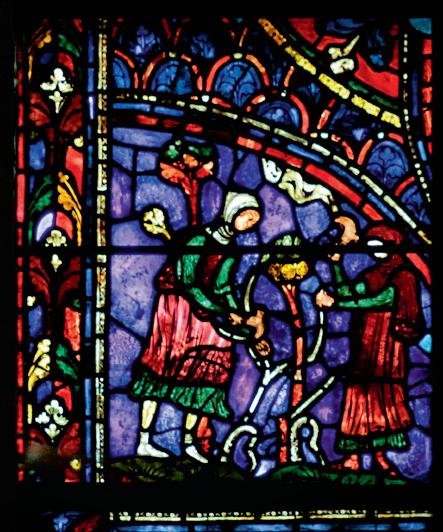
6 What types of schools were there?
There were cathedral schools run by the Church that taught religious doctrine. They were attended by the children of the nobility and clergymen; and municipal schools attended by the children from the bourgeoisie, who were taught reading, writing, accounting, law and medicine; and the universities, which evolved from the cathedral schools.
7 How much power did the monarchy have? Kings acquired more and more power. Some kings ruled over authoritarian monarchies.
8 What institutions existed in the kingdoms? Kings governed in conjunction with a royal council, made up of the king's relatives, key noblemen and religious authorities. The royal courts emerged where the various social of the cities were represented.
9 Why did a serious crisis occur in the 14th century? Due to worsening climate, lack of food, epidemics, and economic and social crisis due to increased taxes, which resulted in uprisings and wars.
10 What was the artistic style of the Late Middle Ages? Gothic art emerged in the 13th century and spread to the rest of Europe. Its buildings reflect power and urban wealth. Cathedrals were large and luminous thanks to new architectural elements. Sculpture and painting continued to have a decorative and didactic function.
In the Late Middle Ages, the city as we understand it today began to take shape. Nowadays, we can consult lists of cities with the highest living standards, which analyse aspects such as political stability, economic resources, access to housing or environmental sustainability, among others.
A sustainable city integrates urban green spaces and reduces CO2 emissions, promotes renewable energy, implements sustainable mobility and the use of public transport, and promotes a circular economy.
The Sustainable Cities Index published annually by ARCADIS ranks the 100 most sustainable cities in the world. Currently, Cittaslow is a program that brings together all the Spanish municipalities that have joined the list. On its site, there is information about the the various localities and their initiatives: cittaslow.es.

Working in teams of 4 or 5 students, select three sustainable cities and collect information about them. Prepare a table on the cities analysing the most relevant ideas from each city.
Then collect information about your city or town and, as a class, discuss which areas are lacking. When discussing this topic, try to use some of the following expressions:
• The most important argument for… is…
• Most importantly, I want to mention that…
• I agree with you that…; however / on the other hand…
• First of all, I would like to state that…
• I concede that… but we must remember that…
• Firstly / Secondly / Thirdly…
• In addition to that…
• Furthermore…
• My final thought is…
• Finally…
Finally, propose measures to improve sustainability, and choose the 5 measures that receive the most support from the group.
Write a report and design an infographic to promote and explain the 5 measures. Then publish it on your school’s website and social networks.
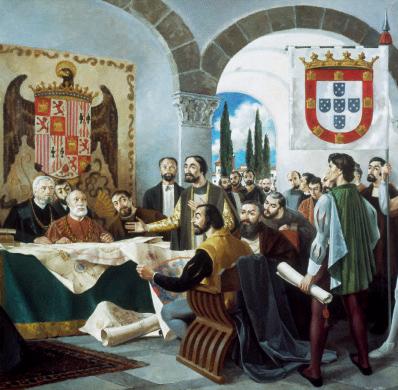
The end of the Middle Ages witnessed the appearance of authoritarian monarchies. They created standing armies to avoid depending on the nobility and appointed senior officials to the Church. On the Iberian Peninsula this process was initiated by the Catholic Monarchs.
2.1. Dynastic union and the strengthening of royal power
In 1469 Isabelle and Ferdinand married. Shortly thereafter they inherited their respective thrones and formed a Dynastic Union. Within the Union, although they made decisions collectively, the kingdoms of Castile and Aragon remained independent. Each kingdom had its own institutions, laws and currency.
2.2. Religious unity
The Catholic Monarchs reinforced their power by unifying religion throughout their territories. They forced all subjects to adopt Christianity. In 1478 they created a special tribunal to persecute heretics, known as the Inquisition. In 1492 they decreed the expulsion of the Jews, where they formed the Sephardic community. That same year the Catholic Monarchs conquered the kingdom of Granada. lims. Muslim subjects who converted were called ly monitored by the authorities.
The kingdoms of Castile and Aragon embraced an
z The Kingdom of Castile conquered Granada in 1492; and the following year, Melilla, Oran and other strongholds along the North African coast. In 1496 the annexation of Canary Islands was completed.
z The Kingdom of Aragon incorporated the Kingdoms of Naples and Navarre.
The main enemy of the Catholic Monarchs was France. They resorted to various measures to combat this threat:
z They sent ambassadors to the various European royal courts.
z They signed international treaties, such as the Treaty of Tordesillas, to allocate the recently discovered territories.
z They developed a policy of expanding power through marriage.
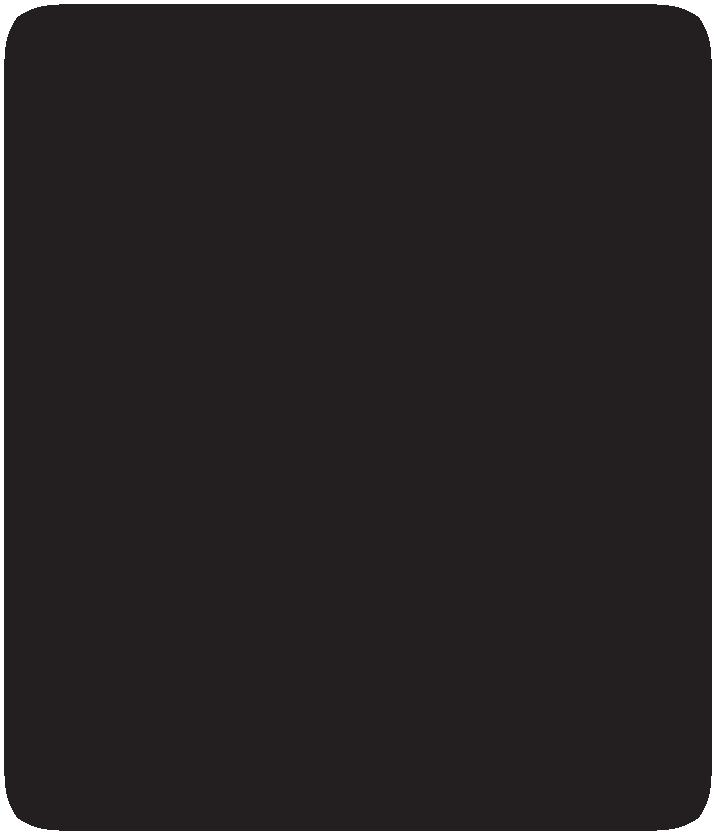
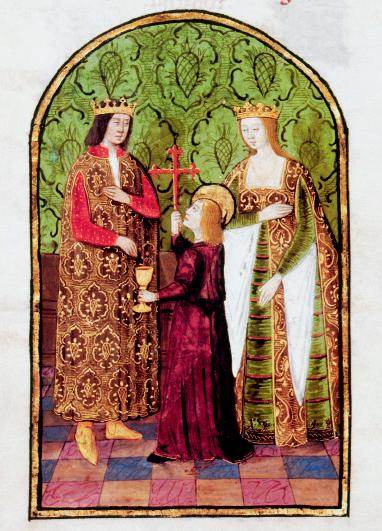
The cities had chief magistrates who represented the monarchs.
Territorial conquests by the Catholic Monarchs


















1 Choose the correct word in each case and write the sentences in your notebook.
a) The Catholic Monarchs made decisions for their kingdoms together/separately.
b) The kingdoms of Castile and Aragon remained united/ independent
c) The cities had mayors and chief magistrates/bishops
d) The chief magistrates were officials who represented the bishops/kings
e) The royal courts were the Chanceries/Armies.
f) They had professional standing courts/armies
g) The Holy Brotherhood functioned like the police/church
h) They created Councils/Courts for Castile, Aragon, the Indies and the Inquisition.
i) The Holy Brotherhood/Treasury was in charge of collecting taxes.
2 Match the two columns to form complete sentences in your notebook.
a) In 1492 the Catholic Monarchs conquered 1. the Canary Islands.
b) In 1469 Isabelle and Ferdinand 2. Portugal.
c) Muslims subjects who converted 3. Granada.
d) In 1496 they completed the annexation of 4. the main enemy of the Catholic Monarchs
e) The authoritarian monarchies 5. decreed the expulsion of the Jews
f) Aragon incorporated 6. married before they inherited their thrones
g) In 1492 the Catholic Monarchs in Granada 7. the Kingdoms of Naples and Navarre
h) France was 8. Appeared at the end of the Middle Ages
i) The Treaty of Tordesillas stated that the newly discovered territories were to be shared with… 9. were called Moriscos
3 Complete the sentences in your notebook with the right word.
a) The reign of the Catholic Monarchs was characterised by religious u
b) The Catholic Monarchs e the Tribunal of the Inquisition.
c) The Catholic Monarchs decreed the expulsion of J who didn’t convert to Catholicism.
d) The Muslims who lived in the kingdom of Granada were e
e) The interests of the Crown of Aragon were focused on the M and Italy.
4 Work in pairs. Discuss these questions with your partner before reading the unit.
a) What kingdoms existed on the Iberian Peninsula at the end of the Middle Ages? Did the kingdoms all share the same language, customs, and religion?
b) Think about the advantages and disadvantages of living in a globalised world.
5 Decide whether these sentences are true or false and correct the false ones in your notebook.
a) At the beginning of the Middle Ages, authoritarian monarchies emerged.
b) Authoritarian monarchies created standing armies, to avoid depending on the nobility.
c) Senior officials in the Church appointed authoritarian monarchies.
d) On the Iberian Peninsula, the Bourbon Monarchs initiated the system of authoritarian monarchy.
6 2 Listen to the audio recording and complete the text with the following words: religion, heretics, Muslims, Jews, Moriscos, Catholic, Granada.
To reinforce the power of the Monarchs, it was important for all subjects to profess the same Therefore, in 1478 the Inquisition was founded to persecute
In 1492 they decreed the expulsion of the and conquered . In 1502 the were expelled. Those who converted were called , but they were also persecuted and closely monitored by the authorities.
7 Read the text and decide if the sentences are true or not. Correct the false ones in your notebook.
The Sephardim or Sephardic Jews are descendants of the Jews who lived in Spain and Portugal at the end of the 15th century until their persecution and mass expulsion. The Sephardim initially fled to North Africa, the Ottoman Empire, and many eventually settled in France, Holland, England, Italy, and the Balkans. Salonica in Macedonia and the city of Amsterdam also hosted major Sephardic settlements.
The Jews were noted for their cultural and intellectual achievements within the Mediterranean and northern European Jewish communities.
a) Sephardim and Jews mean the same thing.
b) Amsterdam became an important trading city for the Sephardim.
c) There’s no difference between Sephardic and Jewish communities.
d) The Sephardim were noted for their cultural and intellectual achievements.
e) The Sephardim fled to North America.
8 Investigate whether the territories of the Autonomous Community of Aragon correspond to those of the former Crown of Aragon. Make the same comparison with the Crown of Castile.
3.1.
The most important trade route was the Silk Route, from China to Constantinople (Istanbul). In 1453 the Turks conquered Constantinople and European kingdoms had to seek out alternative routes, which led to the discovery of America and the first voyage around the Earth.
Europe witnessed significant advances: in the Mediterranean, galley ships powered by sails and rowing were used. The rowers were either freemen, slaves or criminals. For use on the Atlantic Ocean, shipbuilders designed the carrack (nao) and the caravel, to endure the strong waves. The maps of the period were very imprecise. The new instruments used for orientation included:
z The compass, to locate the cardinal directions.
z The hourglass, a sand clock used to calculate the speed of the ship.
z The slider, to calculate the ship’s speed.
z The quadrant and the astrolabe, which enabled mariners to calculate latitude.
3.3.
In part of his search for a new trading route, Prince Henry the Navigator established a naval academy where all the latest innovations and techniques were studied. Thanks to his expeditions, maps of the African coast were drafted. Portugal gradually conquered the entire coast until the country’s explorers reached India and China by way of their new maritime route.
3.4. Castilian discoveries
In 1492, during the conquest of Granada, the Catholic Monarchs received a proposal from a Genoese mariner named Christopher Columbus: to reach India and China by sailing towards the west.
Columbus set sail from Huelva with two caravels and one carrack in August 1492. On October 12th, 1492, he set foot for the first time on an uncharted island. Upon his return to Castile, he brought back samples of fauna, flora, captured natives, and he obtained permission to carry out more voyages. Columbus was convinced that he had reached Asia at the time of his death. Actually, he had arrived on a new continent that would be called America.
The newly discovered lands led to a conflict between Spain and Portugal. In 1494, the Treaty of Tordesillas was signed. What lay to the west of the imaginary line of demarcation went to the Crown of Castile. The rest was for Portugal.
The discovery of America had signified a bonanza for the Crown of Castile, although it still had not resolved the problem of finding a new spice route.
In 1519 Magellan was commissioned to open a new trading route. To do so, he sailed along the American coast until he reached the Pacific Ocean. Magellan died in battle, and Juan Sebastián Elcano returned to Castile with what remained of the expedition: one ship and 18 survivors. By doing so, they demonstrated that the Earth is spherical, and they opened new trading routes for spices and they made contact with new peoples.
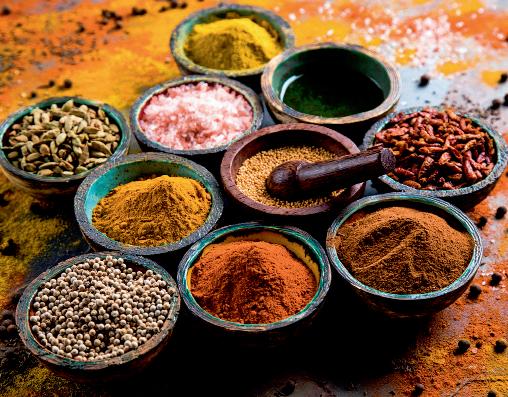
were not only used for cooking, but also for preserving food, making perfumes, medicines even as currency.

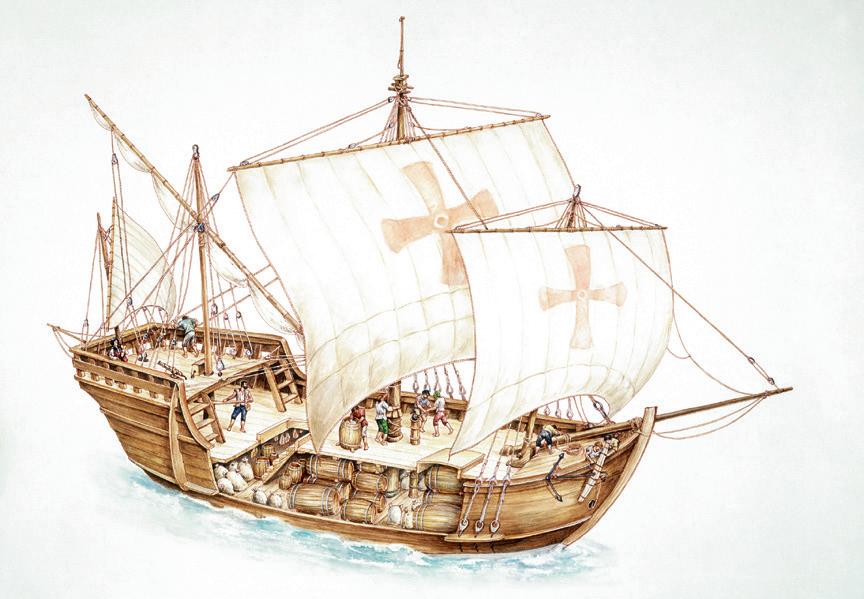
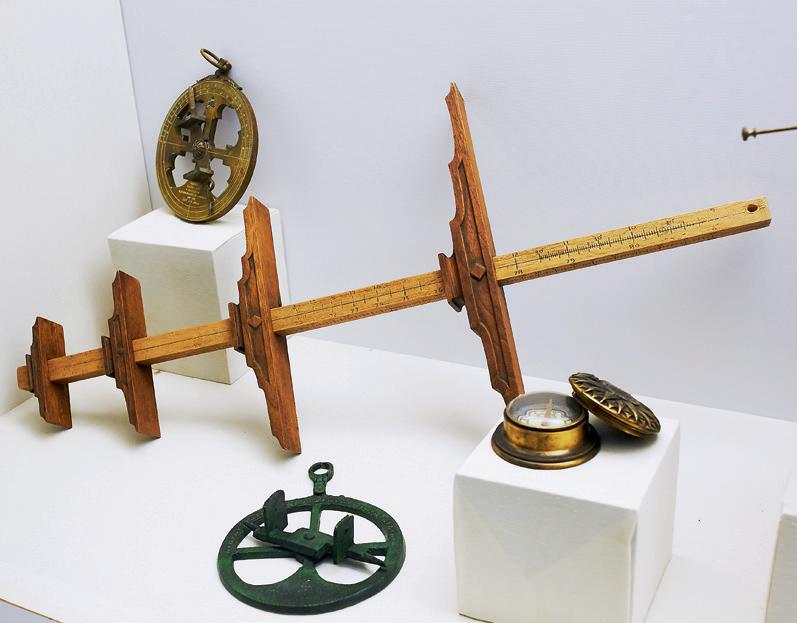
9 Look up the meaning of the following terms and match them to their definition.
a) Bow 1. Side towards which the wind is blowing
b) Stern 2. Right side of the ship looking from stern to bow.
c) Windward 3. Forward part of a ship.
d) Leeward 4. Side from which the wind is blowing.
e) Port 5. Left side of the ship looking from stern to bow.
f) Starboard 6. Rear end of a boat.
10 2 Lapulapu was the chief of a tribe Magellan's men encountered. He is considered a national hero in some parts of the Philippines. Listen to the audio recording and, in your notebook, complete the text to find out why the date ‘27 April 1521’ appears on the centre of the shield.
The Battle of Mactan took place on April 27th, 1521 on the island of Mactan (Philippines). 1,500 under the command of Lapulapu defeated a group of 49 members from the Spanish . Magellan’s death in ended his voyage of and delayed Spanish occupation of the for over forty years until the expedition of Miguel López de Legazpi in 1564. Modern Philippine society regards him as the first Philippine because of his resistance to Spanish . The Philippine National Police and the Bureau of Fire Protection use his as part of their official seals.
11 Complete the text with the following words and answer the questions in your notebook: reconquest, areas, instruments, navigation, geographical, proposal, expeditions, economic, conquest.
Most major discoveries were driven by reasons. Their success was due, in part, to the proliferation of new in the 15th century and new mathematical knowledge applied to . The Iberian Peninsula was the point of departure for new Portugal launched its first expedition because it was the first peninsu-lar kingdom to complete its The key figure in this process was Prince Henry the Navigator. Columbus was supported by the Catholic Monarchs after John II of Portugal rejected his to seek an alternative trade route. The kingdoms of Spain and Portugal clashed over the and colonisation of the continent. In 1494, the Catholic Monarchs and John II of Portugal signed the Treaty of Tor-desillas, which established of navigation and conquest for the two king-doms in America and the Atlantic.
a) Who launched the first expedition in search of new trade routes?
b) Which kings financed the new discoveries?
c) Who proposed a new, alternative spice route?
d) Why was the Treaty of Tordesillas signed?
12 Read the lyrics of the song Columbus Song-1492 by Teaching Tolerance and answer: Do you think Columbus ‘discovered’ the Americas? Argue in favour and against this proposition.
In fourteen hundred ninety-two
Columbus sailed the ocean blue,
It was a courageous thing to do
But someone was already here.
Columbus knew the world was round
So he looked for the East while westward bound,
But he didn’t find what he thought he found,
And someone was already here.
Chorus
The Inuit and Cherokee, The Aztec and Menominee,
The Onandaga and the Cree;
Columbus sailed across the sea,
But someone was already here.
It isn’t like it was empty space,
Caribs met him face to face.
Could anyone discover the place
When someone was already here?
13 Locate the terms in the word search that correspond to the following definitions.
a) Ships used to navigate the Mediterranean.
b) Two types of ships used to navigate the Atlantic.
c) Instrument that indicates the cardinal directions.
d) Two instruments used to calculate the speed of the ship.
e) Two instruments used to calculate latitude.
f) The name of the treaty between Castile and Portugal.
g) The most important Asian trade route.
h) It was conquered by the Catholic Monarchs in 1492.
4.1. The universal monarchy of Charles V
Charles V inherited the territories of the Catholic Monarchs along with others in Central Europe, thus forming an empire. As he was far from Castile, he surrounded himself with foreign advisors.
On the Iberian Peninsula he lacked support because he was always absent. The major cities rebelled against him, although the royal army defeated them. Abroad, his main enemies were France and the Turkish Empire.
The Protestant princes of the Holy Empire rejected his expansionist policy. After defeating them in battle, in the Peace of Augsburg, he was forced to tolerate Protestantism in those territories.

Before his death, he distributed his territories: the title of emperor and the Austrian territories went to his brother Ferdinand; the Hispanic kingdoms, Italy, Flanders and the overseas territories went to his son, Philip II.
4.2.


Felipe II inherited the empire from his father Carlos V, and from his grandfather, the king of Portugal. He governed his empire from El Escorial, near Madrid. As a staunch defender of Catholicism, he reinforced the Inquisition, which sparked a rebellion among the Moriscos of Granada, who were eventually expelled. He defeated France in the battle of San Quintín as well as the Turks in the battle of Lepanto, in 1571. The Flemish Protestants achieved their independence with England’s assistance.
4.3.
The kingdoms were independent, each with their own laws, customs and languages. Royal decisions had to be approved by each territory’s Parliament, in territorial councils. There were also specific councils for the Treasury or the Inquisition. The State Council attended to affairs common to all the territories. Viceroys were appointed for faraway territories, and they governed with a high degree of autonomy. In the cities there were still chief magistrates (corregidores) and chanceries.
By the 15th century, a reduction in epidemics enabled the population to grow. Agriculture, livestock raising, handicrafts and trade all thrived. Seville was a hub for trade. The massive arrival of precious metals from America led to an increase in prices. Debts to pay for the wars led to bankruptcy. Society remained divided by social class. The nobility had lost their military power, but they retained their wealth, as was the case of the Church, which continued to collect tithes. Many peasants ceased to be serfs for noblemen. Merchants and artisans began to forge a new social group in the cities, called the bourgeoisie.
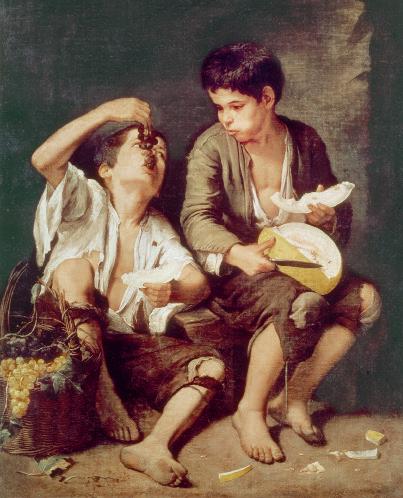
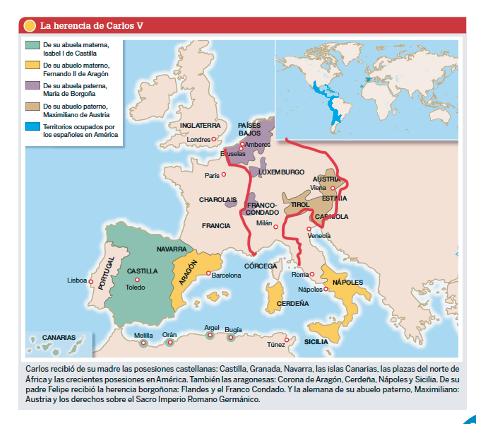
14 In your notebook, match the two columns and write complete sentences.
a) Charles I believed 1. to control municipal power.
b) The comuneros didn’t want 2. in defending the empire.
c) The brotherhoods wanted 3. to pay for the coronation of Charles I as emperor.
d) Charles I found it difficult 4. to speak Spanish.
15 In your notebook, complete the table with the conflicts during the reign of Philip II.
Domestic policy Foreign policy
Religious conflicts
Territorial rebellion Economy
Control of the Mediterranean
Separatist movements
16 Read the sentences and decide which are true and which are false. Correct the false sentences in your notebook.
a) Charles V was a Spanish king, the son of Joanna of Castile and Philip of Austria.
b) Soon after being crowned king, Charles V asked the cities of Castile for money.
c) Charles V inherited the Crown of the Holy Roman Empire from his father, Philip of Austria.
d) The Comuneros rebelled against Charles V and ended up defeating the King.
17 Why did Charles V divide his possessions between his son Philip II and his brother Ferdinand? Choose the correct word to find out the answer.
After a life of numerous conflicts/agreements in Europe aimed at preserving the diversity/unity and power of his empire, Charles realised that his efforts had been enough/in vain. His possessions were too widespread, and on his death, he therefore sold/surrendered the Crown of Spain and all its European and American possessions to his daughter Philippa/son Philip, and gave the title of emperor/monarch to his son/brother Ferdinand, along with his pos-sessions in Austria/Africa.
18 Complete the text in your notebook with the following words: kings, controlled, countries, region, powerful, father, nations, queen, ruled, family, countries.
If you want to be a king or , you should make sure your parents already are and queens. Not everyone gets to be that lucky, but Charles was born in 1500 to King Philip and Queen Joanna. His parents were Habsburgs, a that ruled many in Europe 500 years ago. He was only six when his died. As such, he grew up learning how to rule entire
By the time he turned 20, he all the Holy Roman Empire (a that today is Germany and northern Italy), the Netherlands, and Spain. Spain hadareas by another country from far away - in North and South America. At this point, Charles was perhaps the most person in the world.
Large-scale trade began with the discovery of America. What are the problems with globalisation today?
Maritime transport gets 328 % more expensive due to COVID and bottlenecks in China
The high cost of maritime transport continues unabated for companies whose supply chains and exports depend on shipping.
The price of wheat soars to 50 % higher this year due to unshipped wheat in Ukraine
Wheat and other agricultural raw materials experienced a price rally as a result of Russia’s war against Ukraine.
A cargo ship blocks the Suez Canal and causes an enormous maritime bottleneck
Dozens of ships remained trapped in the Suez Canal after the vessel known as Ever Given got stuck on Tuesday in the maritime passageway due to a sandstorm.
Read the news headlines and explain the causes and consequences of each problem.
Evaluate which of the following measures would resolve the problems mentioned in the news.
1. Opening a manufacturing company for supplies in Europe to avoid manufacturing in China.
2. Increasing the volume of traffic through the Suez Canal by investing in infrastructure.
3 Launching publicity campaigns to urge consumers to use fewer raw materials.
4 Investing in air transport to depend less on maritime transport.
5. Using locally-sourced production to avoid repercussions from wars in faraway countries.
The Mayas inhabited the Yucatan peninsula and the sur rounding areas. They were proficient in agriculture and trade. They had a thriving culture. They developed mathe matics, astronomy and architecture. Their calendars were very precise, and their most noteworthy buildings were the stepped pyramids.
The Incas built a great empire in the Andes. They devel oped terraced agriculture on mountainsides. The supreme authority was the Inca, considered to be a divine being and a son of the Sun. Below him were the nobility, the priests, the population, the serfs and the slaves. They were pol ytheistic. They constructed buildings with giant slabs of stone.
The Aztecs inhabited what is now Mexico. They were pro ficient in agriculture, and the manufacture of gold and ce ramic objects. The emperor held all political and religious power. Below him were the nobility and the priests. They offered human sacrifices to their gods.
Following the discovery of the new lands, many were drawn by the promise of conquest and riches. The expe ditions relied on the support of the Crown. Many of them failed.
Main pre-Columbine peoples
Toltecas
Aztecas
Aravacos
MayaQuichés
Caribes
Chibchas
Caribes
Quechuas
Aimaras
Araucanos
Guaraníes
Puelches
Patagones


In 1519 an army led by Hernán Cortés defeated emperor Montezuma. In 1521, Cortés put an end to the Aztec Empire.
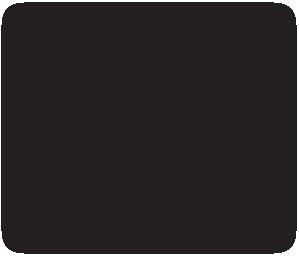
Aztecs Mayas Incas
An army led by Francisco Pizarro executed emperor Atahualpa, and immediately thereafter, the Inca Empire disappeared. The main factors that made conquest possible were:
z Firearms, horses and war-trained dogs.
z The conquerors’ alliances with the Incas’ and Aztecs’ enemies.
z The indigenous religions, which mentioned gods who would appear from the sea.
The new territories had their own laws and Councils. There were two viceroyalties that were, in turn, divided into governorships.
Colonists were owners of the land and they controlled the indigenous people who worked on their property. The gold mines were worked by indigenous labour. In theory, a colonist was expected to protect and take care of the indigenous peoples, but in practice, they committed many abuses. Trade with America was a royal monopoly, and everything went through the ‘Casa de Contratación’ (House of Trade with the Indies), originally located in Seville.
The new society was a racially-based hierarchy in which Spaniards and their descendants (criollos) were considered superior to indigenous people, who in turn were considered superior to black slaves. The new cities reproduced the names and architectural styles of Spain.
Fueguinos

The Casa de la Contratación (House of Trade with the Indies) in Seville.
Andalusia played a key role in the discovery and conquest of America. Columbus’ ships set sail from Huelva; Magellan’s from Sanlúcar de Barrameda, and many of the explorers were Andalusian. All the trade with America was coordinated from this building, and ships had to set sail from the port of Seville.
Ending poverty in all its forms, everywhere
In Bolivia, many children work in mines under very harsh conditions. Several years ago, the president prohibited child labour so the children could go to school but the kids themselves complained since their families needed their income to survive. How do you think we should deal with this problem?
19 Search for information and then in your notebook, match the figures to the conquered territories.
a) Atahualpa 1. Tenochtitlan
b) Pedro Álvarez Cabral 2. Buenos Aires
c) Francisco Pizarro 3. Quito
d) Montezuma 4. Brazil
e) Mendoza 5. Inca Empire
20 2 Listen to the audio recording and complete the text in your notebook.
After the of America, Seville became the only on the Iberian Peninsula where it was possible to charter and receive ships from the Indies. It was there that all the people and bound for and arriving from the new continent embarked and disembarked.
In the Casa de Contratación (House of Trade with the Indies) was created in Seville to regulate between the Spanish monarchy and its overseas . However, at the beginning of the 18th century this role was transferred to Cádiz.
Thanks to the importance of with the Americas, Seville and Andalusia ex-perienced significant and demographic growth.
In Hispanic America, people were of mixed races. The whiter they were, the higher their social status. Does this situation persist today?
It is estimated that around 42 million indigenous people live in Latin America. Poverty affects 43 % of the indigenous population, and this in turn hinders the full development of indigenous children. According to the UN, the life expectancy of indigenous people is up to 20 years lower than that of non-native communities, as they lack medical care and social benefits.
21 Read the text and complete it with the following words: Columbus’, Andalusian, Guadalquivir, Cádiz, Andalusia, Seville. had a very prominent role in the discovery and conquest of America. ships left from Huelva, Magellan's from Sanlúcar de Barrameda, and many of the explorers were . Furthermore, all trade with America had to be organised from , until in the 18th century. Eventually, the size of the ships made it difficult to sail up the River, so it was decided to change the trading house to another Andalusian city:
22 Decide if these sentences are true or false and correct the false ones in your notebook.
a) The Mayans inhabited the Yucatan Peninsula and the surrounding areas.
b) The Mayans did not have a thriving culture.
c) The Incas built a great empire in the Alps.
d) The Incas were monotheistic.
e) The Aztecs lived in present-day Mexico.
f) The Aztecs offered human sacrifices to their gods.
23 Choose the correct word and write the text in your notebook. The Mayas/Incas created an extraordinary civilisation/alfaphet around the Yucatan Peninsula/Island The silver/golden age of the Maya/Incas civilisation stretched from the third to the fourth/tenth centuries, after which many cities were abandoned/repopulated for reasons that remain unknown to this day. The Mayas/Incas didn’t create an empire but built their civilisation around independent/autonomous city-states.
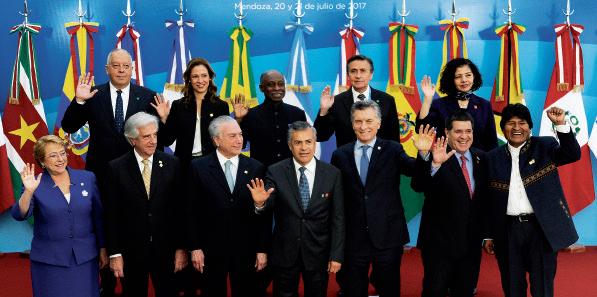
A.What do you think is the current plight of indigenous people? Read the sentences and say whether they are true or not.
1. Indigenous populations have greater difficulty accessing healthcare.
2. Indigenous children find it easy to attend school.
3. Indigenous art and culture are generally respected and protected.
4. Indigenous communities are wealthy and can easily pay for infrastructure projects in their countries.
5. Life expectancy for indigenous people is very low.
The political representation of indigenous people is key in their fight for greater equality. Do you believe that indigenous populations are well-represented by the political parties of their respective countries?
There are two future forms used in most conversations: will and going to. The main difference between the two forms is:
z going to is used for plans and intentions made before the moment of speaking.
z will is used to speak about the future at the moment of speaking (rapid decisions).
Plans and intentions/evidence Immediate decisions
Are you going to go? I am not going to go. Will you go? No, I will not go.
I’m going to travel to Norway next year. It’s cold. I’ll close the door.
The match is 5-0. They are obviously going to win. That hamburger looks good, I’ll have the same!
1 What is an authoritarian monarchy and under whose reign does it begin in Spain?
It is a monarchy with very strong centralised power. In Spain it begins under the reign of the Catholic Monarchs.
2 What institutions existed under the Catholic Monarchs?
The Catholic Monarchs organised their reign with the following institutions: Chanceries, chief magistrates, Holy Brotherhood and Councils.
3 What happened during this period from a religious perspective?
The Catholic religion was imposed on all subjects. The Catholic Monarchs expelled the Jews and forced both, Jews and Muslims, to convert to Christianity in case they preferred to stay. To keep them under control, the Tribunal of the Holy Inquisition was established.
4 What occurred with the trading routes of the period?
The trading routes were interrupted when the Turks conquered Constantinople. Portugal and Spain sought out new routes and managed to circumnavigate the globe.
5 What happened in 1492?
The Catholic Monarchs conquered Granada and financed Columbus’ expedition aimed at reaching the Indies by sailing to the west. Thanks to this voyage a new territory was discovered that would later be called America.
1 Imagine that you are Christopher Columbus and you want to head westward towards Asia. Write the correct tense of the verbs in brackets to complete his message for the Catholic Monarchs.
My name is Christopher Columbus. If we continue to use the traditional routes to Asia, eventually, the Turks (go) prevent our passage. We have some knowledge of the size of the Earth. I think that if we travel westward, we (make) it all the way to Asia. Thus, the Turks (to be) able to stop us. If you allow me to do so, I (organise) an expedition, my ships (explore) new lands and we (incorporate) them into your Kingdom.
2 Put the words in the proper order to form questions using ‘going to’ or ‘will’. Then, answer them in your notebook: a) west reach going to heading you Asia Are by b) War suppress fight us to the of Will in Independence Flanders you with c) allegiance Will you king swear the to d) you sharpen his going sword to Are
6 What happened with the newly discovered territories? Castile and Portugal competed to conquer new territories until finally reaching an agreement to divide up the world in the Treaty of Tordesillas.
7 When did the Spanish Empire reach the height of its expansion?
The Spanish Empire reached the height of its expansion under Philip II. He inherited the territories of Castile, Aragon, northern Italy, Flanders and the American territories.
8 How was society organised?
It continued to be organised by social class. Among the privileged were the merchants and the artisans who lived in the cities and forged a new social class called the bourgeoisie.
9 What conquests were carried out in America and what made them possible?
The empires that already existed in America were conquered: the Aztecs by Hernán Cortés; the Incas by Francisco Pizarro. This was all made possible by the Spaniards superior firepower, their alliances with the Aztecs’ and Incas’ enemies, and certain religious beliefs.
10 How were these territories governed after conquests?
The king created two viceroyalties with a high degree of administrative autonomy. Land and property were allocated to Spanish colonists along with the indigenous labourers who worked the land. A hierarchical society based on race took shape.
As a consequence of globalisation, we are used to buying things without thinking about where they come from. This process began very gradually during the Age of Discovery and following the first circumnavigation of the globe and has expanded rapidly ever since. Globalisation has advantages and disadvantages:
Wide range of products available for our consumption. Pollution from the transport of faraway goods.
Chance to get to know other cultures.
Opportunity to discover local products and small businesses from other countries.
Affordable prices for goods produced far away.
Create a list of products you collectively consume at home, notate where the products were manufac tured and do the following:
1. Look for labels for all sorts of products: clothing, electronic materials, personal objects, food, etc.
2. Take pictures of the labels. Both the product and its origin should be visible.
3. Draw a world map on a big cardboard sheet and place tacks on the places where the products are from. You can also do this digitally if you prefer.
4. Think of a catchy title for the map.
5. In pairs, answer the questions about the products’ origin: Where are they produced? Where do they come from?
Loss of local identities.
Increased consumer trend, with its own negative consequences.
Dependence on other countries
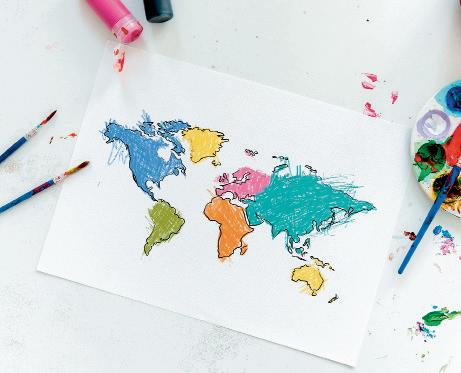
3
You can hang the maps in the classroom, hallways, etc., and if they are digital, you can share them on social media and the school’s website, for all to see where the products we consume come from and also to raise awareness about the consequences of our consumption.
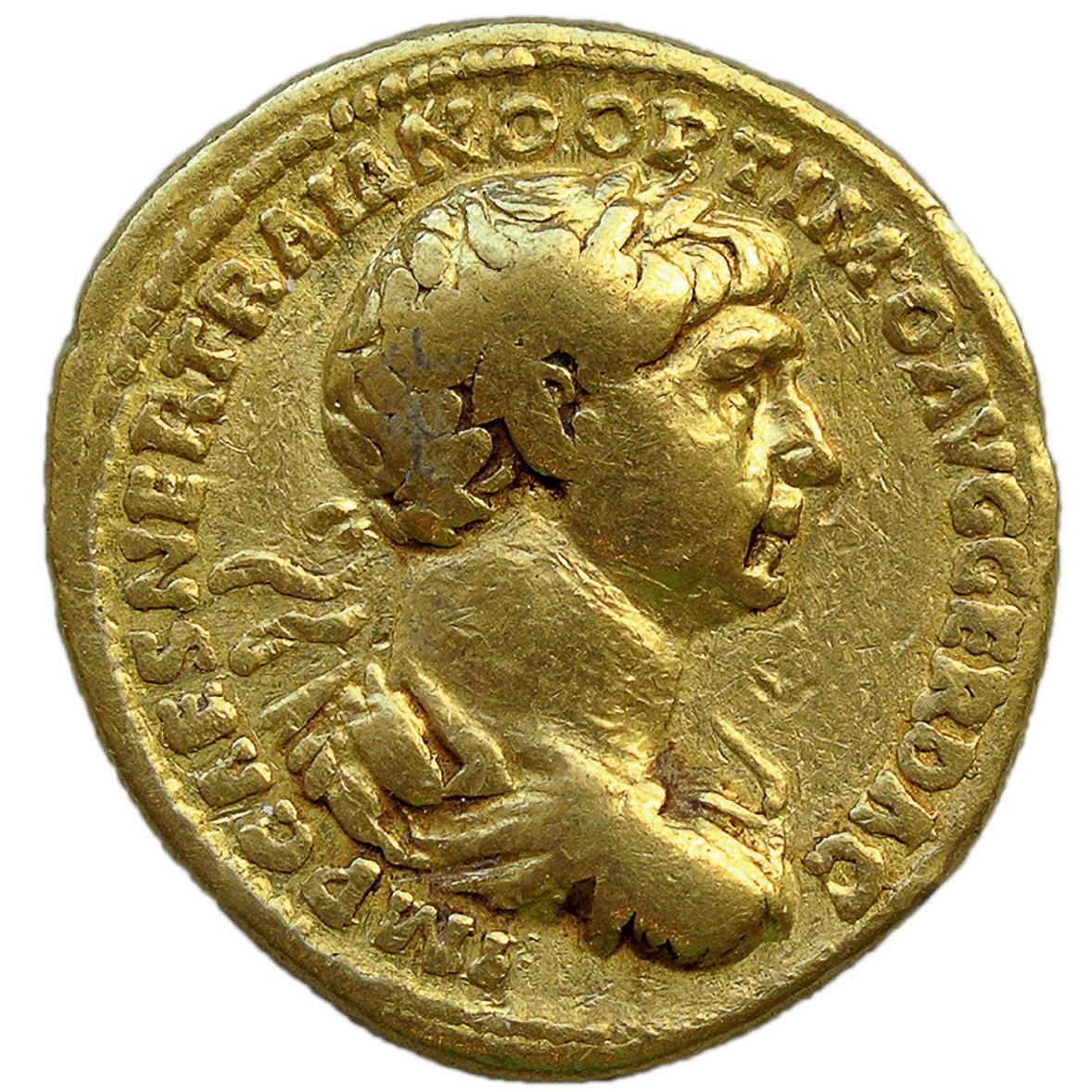
Llobregat ogelláG
Carrión Pas ógarA n EBRO avreuH nítraM acniC areugoN .R PareugoN . ergeS ergeS
n Órbigo
acoliJ
naicilaGM fissa Cabeza de Manzaneda 1 778 Teleno 2 188 Almanzor
Mij
Corbones
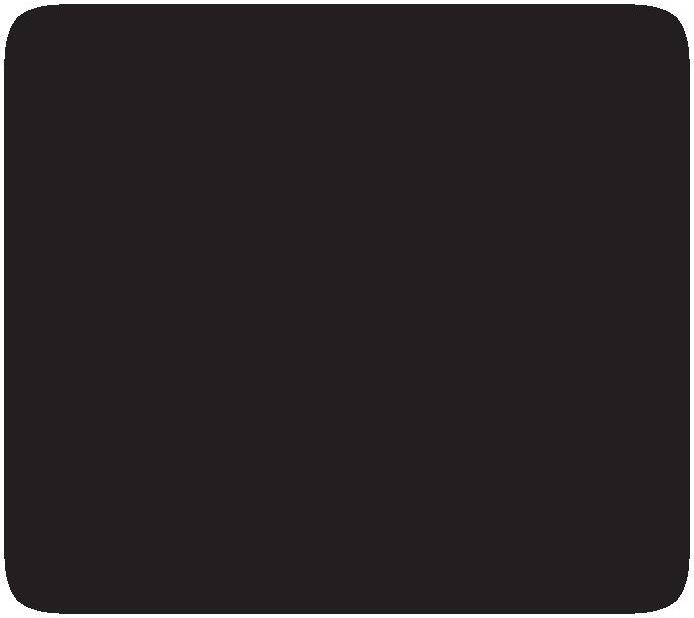

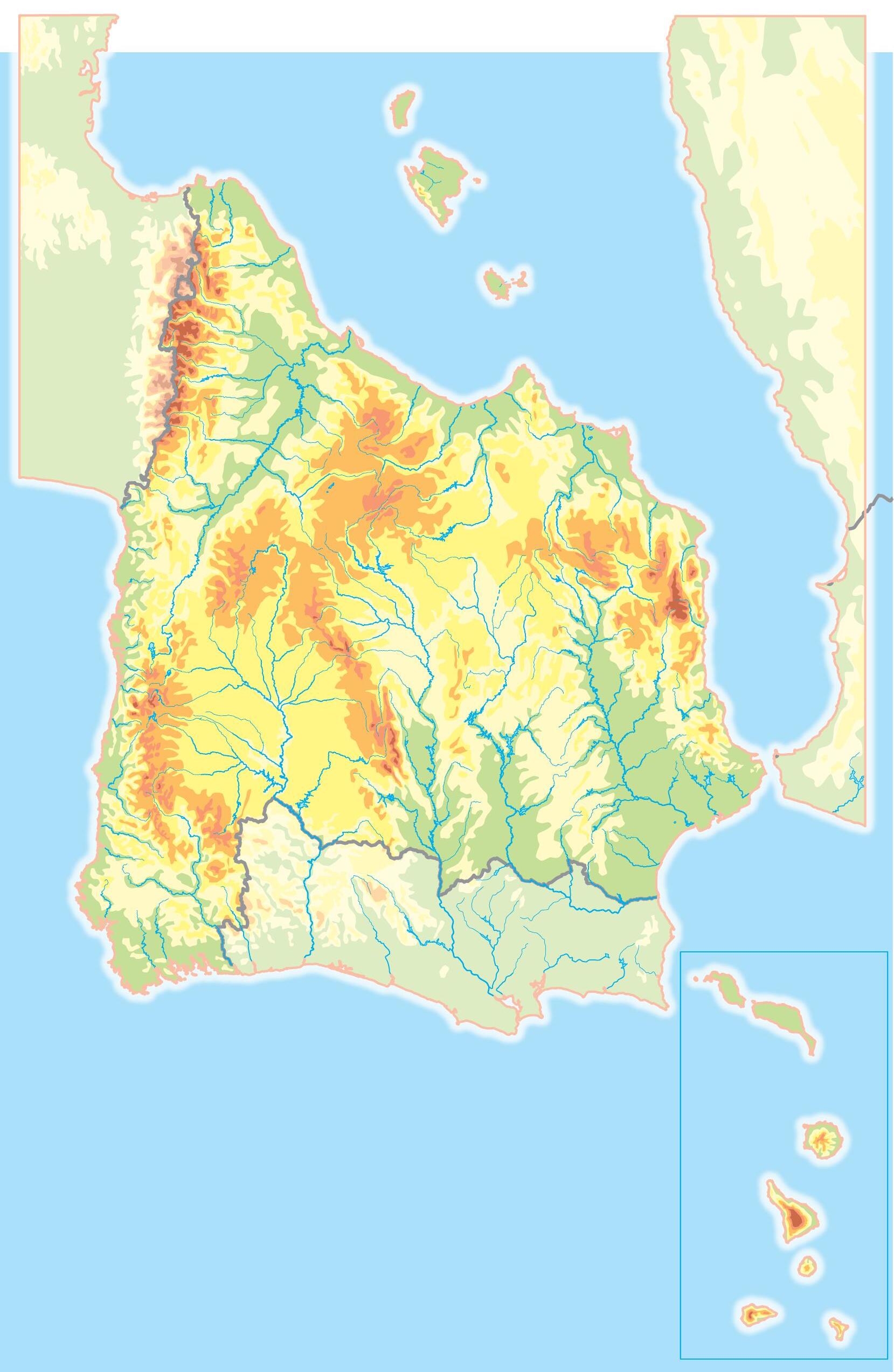
of some autonomous community institutions
community capital
Territorial organisation of the Spanish State: provinces and autonomous communities

